23 May
06:00–00:00 

Kirov Central Park of Culture and Recreation
The Central Park of Culture and Recreation named after Sergei Kirov is the oldest park in St. Petersburg. Its architecture and layout are a masterpiece of the early 19th century landscape design, created by the famous architect Carlo Rossi. In its contemporary period, the Park combines beauty and sophistication of the previous centuries with possibilities of casual recreation for residents and guests of St. Petersburg. Every year the Park hosts the best open-air events of the summer. Tulip blossom season is a highlight of Yelagin Island. In 2018, the tulips are in blossom on 10–26 May.
The Park has two entrances: from the Stary Teatr Square through the 1st Yelagin Bridge and from Primorsky Prospect through the 3rd Yelagin Bridge.
On weekdays, the admission to the park is free.
26–27 May: Premium Package Participants can enter the park upon presenting the badge.
Tours and other additional services are covered by the participants.
The Park has two entrances: from the Stary Teatr Square through the 1st Yelagin Bridge and from Primorsky Prospect through the 3rd Yelagin Bridge.
On weekdays, the admission to the park is free.
26–27 May: Premium Package Participants can enter the park upon presenting the badge.
Tours and other additional services are covered by the participants.
23 May
09:00–20:00 

Peterhof State Museum-Reserve
The Peterhof State Museum-Reserve is the capital of fountains. It attracts thousands of tourists every year. Forum guests will be able to enjoy the Lower Park, one of the most beautiful parks in Europe. It is graced by 150 completely different fountains: from colossal cascades, including the Grand Cascade that features the famous statue of Samson in the centre of the ensemble, to trick fountains, which delight children and adults alike.
The Grand Cascade is officially switched on at 11:00 every day.
Premium Package participants can present their badge to gain access.
Please note that participants must pay for guided tours and other additional services (including admission to the Grand Peterhof Palace) separately.
The Grand Cascade is officially switched on at 11:00 every day.
Premium Package participants can present their badge to gain access.
Please note that participants must pay for guided tours and other additional services (including admission to the Grand Peterhof Palace) separately.
23 May
09:00–22:00 

Catherine and Alexander Parks
The magnificent palace complex at Tsarskoye Selo would not be complete without its parks, the most important of which, Catherine and Alexander, are named after the palaces that grace their grounds.
Catherine Park is divided into two parts – the regular Old Garden and an English landscaped park. Symmetry lies at the heart of the design of the Old Garden, with the palace at its centre, and strictly mapped out avenues, squares, pavilions, and sculptures.
Alexander Park spans around 200 hectares and flanks the courtyard of Catherine Palace. It is also divided into a regular part (the New Garden) and a landscaped park.
Premium Package participants can present their badge to gain access.
Please note that participants must pay for guided tours and other additional services separately.
Catherine Park is divided into two parts – the regular Old Garden and an English landscaped park. Symmetry lies at the heart of the design of the Old Garden, with the palace at its centre, and strictly mapped out avenues, squares, pavilions, and sculptures.
Alexander Park spans around 200 hectares and flanks the courtyard of Catherine Palace. It is also divided into a regular part (the New Garden) and a landscaped park.
Premium Package participants can present their badge to gain access.
Please note that participants must pay for guided tours and other additional services separately.
23 May
10:00–12:00 

The Fabergé Museum
The Fabergé Museum, in the Shuvalov Palace, houses the world’s largest collection of works by the House of Fabergé. Here you can not only appreciate the exquisite jewellery masterpieces from the Imperial Easter Series commissioned by the two last Russian Emperors, but also cabinet gifts, lapidary art, silver, enamel, and jewelled Russian icons, all crafts in which Fabergé specialized.
Premium package holders can present their SPIEF 2018 badge to gain access to the museum.
Please note that participants must independently pay for excursions and other additional services.
Premium package holders can present their SPIEF 2018 badge to gain access to the museum.
Please note that participants must independently pay for excursions and other additional services.
23 May
10:00–22:00 

2018 Sand Sculpture Festival
An annual sand sculpture festival is held outside on the beach at the Peter and Paul Fortress, amazing visitors year after year with its grand scale and superb craftsmanship.
Premium Package participants can present their badge to gain access to the festival.
Please note that participants must pay for guided tours and other additional services separately.
Premium Package participants can present their badge to gain access to the festival.
Please note that participants must pay for guided tours and other additional services separately.
23 May
10:00–17:00 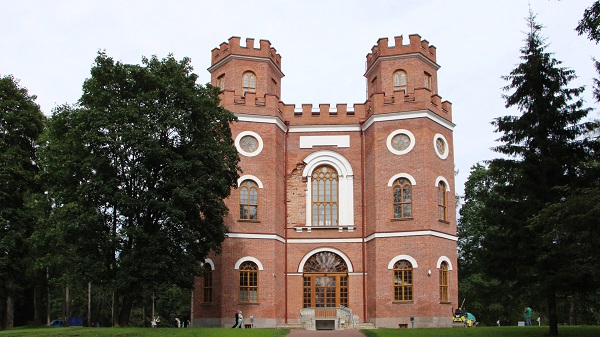

The Arsenal of Tsarskoye Selo: The Imperial Arms Collection
The Arsenal of Tsarskoye Selo: The Imperial Arms Collection exhibition, curated in conjunction with the State Hermitage Museum, first opened in 2016. The exhibited items include a collection of Eastern bladed weapons, firearms from the eighteenth and nineteenth centuries, and European arms and equipment from the sixteenth and seventeenth centuries, including armour, helmets, halberds, swords, and horse harnesses. The State Hermitage contributed some rare items from its collection for temporary display, including some sixteenth-century armour from Nicholas I’s collection.
Premium Package participants can present their badge to gain access to the exhibition.
Please note that participants must pay for guided tours and other additional services separately.
Premium Package participants can present their badge to gain access to the exhibition.
Please note that participants must pay for guided tours and other additional services separately.
23 May
10:00–17:00 

Tsarskoye Selo 1917: On the eve ...
This exhibition describes the life of the Tsarskoye Selo residence from February to October 1917, the period between the two revolutions. This was a time when one era (the monarchy) was drawing to a close and a new era, full of revolutionary upheavals, was dawning. At that time, the residence at Tsarskoye Selo still existed but it had already lost its imperial status. The last Russian emperor and his family were still living in the Alexander Palace, but he was now citizen Romanov, held under house arrest by the Provisional Government. Starting in spring 1917, an Artistic and Historical Commission was set up at the Imperial Palace of Tsarskoye Selo to inventory the newly nationalized property and create a museum in the former residence.
Premium Package participants can present their badge to gain access to the exhibition.
Please note that participants must pay for guided tours and other additional services separately.
Premium Package participants can present their badge to gain access to the exhibition.
Please note that participants must pay for guided tours and other additional services separately.
23 May
10:00–18:00 

Pavlovsk State Museum
Pavlovsk Palace and Park constitutes a monument to the architecture of the late eighteenth and early nineteenth centuries. The prominent architects, decorators, and painters of the eighteenth and nineteenth centuries who contributed to its creation include Charles Cameron, Vincenzo Brenna, Andrey Voronikhin, Giacomo Quarenghi, Carlo Rossi, Pietro Gonzaga, and others.
Pavlovsk Palace served as the residence of emperors and grand dukes. The names of Paul I and Maria Feodorovna, and the Grand Dukes Mikhail Pavlovich and Konstantin Konstantinovich are associated with this residence. Today, Pavlovsk Palace is a museum with a collection of more than 57,000 items. It includes collections of Russian and Western European arts and crafts, paintings, and drawings, as well as a collection of antique sculptures.
The halls of the palace house a number of expositions devoted to various topics: The Costume Museum, A Woman’s World and Her Hobbies, Church Vestments and Church Plate from the Collections of the Pavlovsk State Museum, and The Russian Residential Interior of the Nineteenth Century.
Premium Package participants can present their badge to gain access to the museum.
Please note that participants must pay for guided tours and other additional services separately.
Pavlovsk Palace served as the residence of emperors and grand dukes. The names of Paul I and Maria Feodorovna, and the Grand Dukes Mikhail Pavlovich and Konstantin Konstantinovich are associated with this residence. Today, Pavlovsk Palace is a museum with a collection of more than 57,000 items. It includes collections of Russian and Western European arts and crafts, paintings, and drawings, as well as a collection of antique sculptures.
The halls of the palace house a number of expositions devoted to various topics: The Costume Museum, A Woman’s World and Her Hobbies, Church Vestments and Church Plate from the Collections of the Pavlovsk State Museum, and The Russian Residential Interior of the Nineteenth Century.
Premium Package participants can present their badge to gain access to the museum.
Please note that participants must pay for guided tours and other additional services separately.
23 May
10:00–18:00 

Sport in Soviet Porcelain, Graphic Arts, and Sculpture
Drawn from the collections of the Russian State Museum, the State Hermitage, and private owners, the approximately 350 examples of domestic ceramics dating from the 1920s to the beginning of the 1990s in this exhibition trace the new artistic approaches and motifs applied by artists over various periods of national history, and explore how the portrayal of sports and a healthy lifestyle in the visual arts has changed.
Premium Package participants can present their badge to gain access to the exhibition.
Please note that participants must pay for guided tours and other additional services separately.
Premium Package participants can present their badge to gain access to the exhibition.
Please note that participants must pay for guided tours and other additional services separately.
23 May
10:00–18:00 

Catherine the Great in Russia and Beyond
Diverse in materials and themes but with a single cultural and historical focus, this exhibition tells the story of significant events in Russian history using over 400 exhibits from the visual and applied arts. It features paintings and graphic works, sculpture, porcelain, glassware, works of applied art, costumes, and archival documents.
Premium Package participants can present their badge to gain access to the exhibition.
Please note that participants must pay for guided tours and other additional services separately.
Premium Package participants can present their badge to gain access to the exhibition.
Please note that participants must pay for guided tours and other additional services separately.
23 May
11:00–17:00 

Peter the Great Museum of Anthropology and Ethnography (Kunstkamera)
The museum presents the traditional cultures of peoples from around the world (Native Americans, Eskimos, Japanese, Indians, Mongols, etc.) as well as some of the first natural science collections, which date back to the time of Peter the Great. The Mikhail Lomonosov and the Eighteenth-Century Academy of Sciences exhibit offers visitors an opportunity to learn about the history of Russian science. There is also an option to enjoy guided tours of the First Astronomical Observatory of the Academy of Sciences and the Gottorp (Greater Academic) Globe exhibits. The museum is currently presenting the following temporary exhibit: Dervishes: Images and Words.
Premium Package participants can present their badge to gain access to the museum.
Please note that participants must pay for guided tours and other additional services separately.
Premium Package participants can present their badge to gain access to the museum.
Please note that participants must pay for guided tours and other additional services separately.
23 May
14:00–21:00 

Caution: Children at Play! Exhibition Project
Over 110 artisans, including painters, drawing artists, sculptors, and video artist participate in this exhibition project. All of them belong to different generations representing different traditions: traditional classical art, underground art, primitivism and hyperrealism, as well as many other trends gaining ground in contemporary visual art. Among the participants, one can find both famous names and young authors: Nikolay Ionin (1890-1948), Nikolay Andronov (1929-98), Oleg Tselkov (born 1934), Ilya Kabakov (born 1933), Oskar Rabin (born 1928), Solomon Rossin (born 1937), Maxim Kantor (born 1957), Vladimir Dubosarsky (born 1964), Leonid Tskhe (born 1983) and many others. Every artist has their own journey, their own childhood and their own memories of it.
Premium and Standard Package Participants can enter the exhibition upon presenting the badge.
Tours and other additional services are covered by the participant.
Premium and Standard Package Participants can enter the exhibition upon presenting the badge.
Tours and other additional services are covered by the participant.
24 May
06:00–00:00 

Kirov Central Park of Culture and Recreation
The Central Park of Culture and Recreation named after Sergei Kirov is the oldest park in St. Petersburg. Its architecture and layout are a masterpiece of the early 19th century landscape design, created by the famous architect Carlo Rossi. In its contemporary period, the Park combines beauty and sophistication of the previous centuries with possibilities of casual recreation for residents and guests of St. Petersburg. Every year the Park hosts the best open-air events of the summer. Tulip blossom season is a highlight of Yelagin Island. In 2018, the tulips are in blossom on 10–26 May.
The Park has two entrances: from the Stary Teatr Square through the 1st Yelagin Bridge and from Primorsky Prospect through the 3rd Yelagin Bridge.
On weekdays, the admission to the park is free.
26–27 May: Premium Package Participants can enter the park upon presenting the badge.
Tours and other additional services are covered by the participants.
The Park has two entrances: from the Stary Teatr Square through the 1st Yelagin Bridge and from Primorsky Prospect through the 3rd Yelagin Bridge.
On weekdays, the admission to the park is free.
26–27 May: Premium Package Participants can enter the park upon presenting the badge.
Tours and other additional services are covered by the participants.
24 May
09:00–22:00 

Catherine and Alexander Parks
The magnificent palace complex at Tsarskoye Selo would not be complete without its parks, the most important of which, Catherine and Alexander, are named after the palaces that grace their grounds.
Catherine Park is divided into two parts – the regular Old Garden and an English landscaped park. Symmetry lies at the heart of the design of the Old Garden, with the palace at its centre, and strictly mapped out avenues, squares, pavilions, and sculptures.
Alexander Park spans around 200 hectares and flanks the courtyard of Catherine Palace. It is also divided into a regular part (the New Garden) and a landscaped park.
Premium Package participants can present their badge to gain access.
Please note that participants must pay for guided tours and other additional services separately.
Catherine Park is divided into two parts – the regular Old Garden and an English landscaped park. Symmetry lies at the heart of the design of the Old Garden, with the palace at its centre, and strictly mapped out avenues, squares, pavilions, and sculptures.
Alexander Park spans around 200 hectares and flanks the courtyard of Catherine Palace. It is also divided into a regular part (the New Garden) and a landscaped park.
Premium Package participants can present their badge to gain access.
Please note that participants must pay for guided tours and other additional services separately.
24 May
09:00–20:00 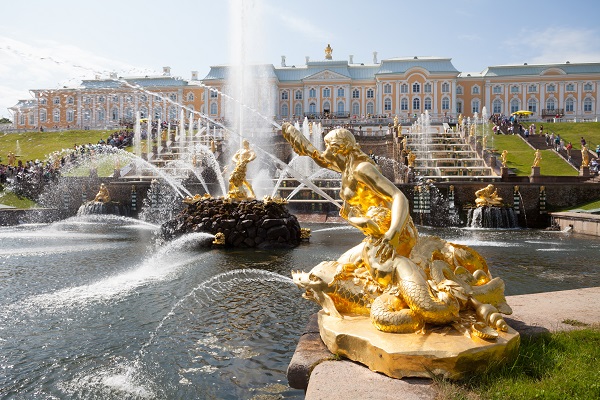

Peterhof State Museum-Reserve
The Peterhof State Museum-Reserve is the capital of fountains. It attracts thousands of tourists every year. Forum guests will be able to enjoy the Lower Park, one of the most beautiful parks in Europe. It is graced by 150 completely different fountains: from colossal cascades, including the Grand Cascade that features the famous statue of Samson in the centre of the ensemble, to trick fountains, which delight children and adults alike.
The Grand Cascade is officially switched on at 11:00 every day.
Premium Package participants can present their badge to gain access.
Please note that participants must pay for guided tours and other additional services (including admission to the Grand Peterhof Palace) separately.
The Grand Cascade is officially switched on at 11:00 every day.
Premium Package participants can present their badge to gain access.
Please note that participants must pay for guided tours and other additional services (including admission to the Grand Peterhof Palace) separately.
24 May
10:00–14:00 

The Fabergé Museum
The Fabergé Museum, in the Shuvalov Palace, houses the world’s largest collection of works by the House of Fabergé. Here you can not only appreciate the exquisite jewellery masterpieces from the Imperial Easter Series commissioned by the two last Russian Emperors, but also cabinet gifts, lapidary art, silver, enamel, and jewelled Russian icons, all crafts in which Fabergé specialized.
Premium package holders can present their SPIEF 2018 badge to gain access to the museum.
Please note that participants must independently pay for excursions and other additional services.
Premium package holders can present their SPIEF 2018 badge to gain access to the museum.
Please note that participants must independently pay for excursions and other additional services.
24 May
10:00–18:00 

Pavlovsk State Museum
Pavlovsk Palace and Park constitutes a monument to the architecture of the late eighteenth and early nineteenth centuries. The prominent architects, decorators, and painters of the eighteenth and nineteenth centuries who contributed to its creation include Charles Cameron, Vincenzo Brenna, Andrey Voronikhin, Giacomo Quarenghi, Carlo Rossi, Pietro Gonzaga, and others.
Pavlovsk Palace served as the residence of emperors and grand dukes. The names of Paul I and Maria Feodorovna, and the Grand Dukes Mikhail Pavlovich and Konstantin Konstantinovich are associated with this residence. Today, Pavlovsk Palace is a museum with a collection of more than 57,000 items. It includes collections of Russian and Western European arts and crafts, paintings, and drawings, as well as a collection of antique sculptures.
The halls of the palace house a number of expositions devoted to various topics: The Costume Museum, A Woman’s World and Her Hobbies, Church Vestments and Church Plate from the Collections of the Pavlovsk State Museum, and The Russian Residential Interior of the Nineteenth Century.
Premium Package participants can present their badge to gain access to the museum.
Please note that participants must pay for guided tours and other additional services separately.
Pavlovsk Palace served as the residence of emperors and grand dukes. The names of Paul I and Maria Feodorovna, and the Grand Dukes Mikhail Pavlovich and Konstantin Konstantinovich are associated with this residence. Today, Pavlovsk Palace is a museum with a collection of more than 57,000 items. It includes collections of Russian and Western European arts and crafts, paintings, and drawings, as well as a collection of antique sculptures.
The halls of the palace house a number of expositions devoted to various topics: The Costume Museum, A Woman’s World and Her Hobbies, Church Vestments and Church Plate from the Collections of the Pavlovsk State Museum, and The Russian Residential Interior of the Nineteenth Century.
Premium Package participants can present their badge to gain access to the museum.
Please note that participants must pay for guided tours and other additional services separately.
24 May
10:00–22:00 

2018 Sand Sculpture Festival
An annual sand sculpture festival is held outside on the beach at the Peter and Paul Fortress, amazing visitors year after year with its grand scale and superb craftsmanship.
Premium Package participants can present their badge to gain access to the festival.
Please note that participants must pay for guided tours and other additional services separately.
Premium Package participants can present their badge to gain access to the festival.
Please note that participants must pay for guided tours and other additional services separately.
24 May
10:00–18:00 

Art Nouveau of St. Petersburg
This exhibition is devoted to one of the most interesting periods in the cultural history of St. Petersburg: the turn of the twentieth century, which is often called the Art Nouveau period.
A whole layer of St. Petersburg fin de siècle city culture was associated with the Art Nouveau style, and this large-scale exhibition in the Peter and Paul Fortress, which presents a very rich collection of works in the Art Nouveau style, offers a reminder of that era.
It features architectural drawings, decorative and architectural details of St. Petersburg buildings, furniture, lighting fixtures, porcelain and glassware, women’s clothing, shoes, and accessories.
Premium Package participants can present their badge to gain access to the exhibition.
Please note that participants must pay for guided tours and other additional services separately.
A whole layer of St. Petersburg fin de siècle city culture was associated with the Art Nouveau style, and this large-scale exhibition in the Peter and Paul Fortress, which presents a very rich collection of works in the Art Nouveau style, offers a reminder of that era.
It features architectural drawings, decorative and architectural details of St. Petersburg buildings, furniture, lighting fixtures, porcelain and glassware, women’s clothing, shoes, and accessories.
Premium Package participants can present their badge to gain access to the exhibition.
Please note that participants must pay for guided tours and other additional services separately.
24 May
10:00–17:00 

Russia in the Great War Museum
This is the first museum in modern Russia dedicated to the tragic World War I period (1914–1917). It is located in the Sovereign’s Martial Chamber, conceived by Emperor Nicholas II as a pantheon of military glory.
The exhibition mainly consists of genuine military and household items belonging to those who took part in the First World War, as well as documentary and photographic materials from the Tsarskoye Selo Museum Reserve collection.
Premium Package participants can present their badge to gain access to the museum.
Please note that participants must pay for guided tours and other additional services separately.
The exhibition mainly consists of genuine military and household items belonging to those who took part in the First World War, as well as documentary and photographic materials from the Tsarskoye Selo Museum Reserve collection.
Premium Package participants can present their badge to gain access to the museum.
Please note that participants must pay for guided tours and other additional services separately.
24 May
10:30–17:30 

St Isaac’s Cathedral State Museum
St. Isaac’s Cathedral is an outstanding monument to late Russian classicism from the mid-nineteenth century.
The remarkable interior of the cathedral features all kinds of monumental and decorative art, including painting, sculpture, mosaics, and coloured facing stones. The cathedral’s main iconostasis is decorated with malachite and lapis lazuli columns. The main altar features a stained-glass window of the ‘Risen Christ’, which is an unconventional decoration for an Orthodox church.
Premium Package participants can present their badge to gain access to the museum.
Please note that participants must pay for guided tours and other additional services (including admission to the Colonnades) separately.
The remarkable interior of the cathedral features all kinds of monumental and decorative art, including painting, sculpture, mosaics, and coloured facing stones. The cathedral’s main iconostasis is decorated with malachite and lapis lazuli columns. The main altar features a stained-glass window of the ‘Risen Christ’, which is an unconventional decoration for an Orthodox church.
Premium Package participants can present their badge to gain access to the museum.
Please note that participants must pay for guided tours and other additional services (including admission to the Colonnades) separately.
24 May
10:30–17:30 

Church of the Saviour on Blood
A unique monument to Alexander II The Liberator, the Church of the Saviour on Blood (Cathedral of the Resurrection of Christ) is a stand-out architectural landmark in the centre of St. Petersburg.
The cathedral features Russia’s largest collection of mosaics, slabs of varicoloured Italian marble, ornamental stones from the Urals and the Altai, and a collection of Russian heraldic mosaics.
Premium Package participants can present their badge to gain access to the church.
Please note that participants must pay for guided tours and other additional services separately.
The cathedral features Russia’s largest collection of mosaics, slabs of varicoloured Italian marble, ornamental stones from the Urals and the Altai, and a collection of Russian heraldic mosaics.
Premium Package participants can present their badge to gain access to the church.
Please note that participants must pay for guided tours and other additional services separately.
24 May
11:00–16:30 

Museum of Applied Art, St. Petersburg Stieglitz School of Art and Design
The exhibition, which sprawls across 14 halls of the museum, boasts about 2,000 items. In the entrance hall, which opens the exhibition, visitors can enjoy temporary installations consisting of items from the museum’s collections. The small Italian galleries display unique examples of furniture from various historical periods. The Teremok Hall features examples of Russian applied art, including costumes, a collection of Russian folk dolls, printed textiles, forged metal items, and furniture. The collection of Western European ceramics and porcelain consists of a wide and diverse range of pieces: German stoneware from the sixteenth to the eighteenth centuries, Italian maiolica from the sixteenth century, unique porcelains from Berlin, Meissen, and Sèvres dating from the eighteenth century, and much more.
Please present your SPIEF 2018 badge to gain access to the museum.
Visits as part of a sightseeing tour must be reserved in advance. Detailed information is available in your personal web office.
Please present your SPIEF 2018 badge to gain access to the museum.
Visits as part of a sightseeing tour must be reserved in advance. Detailed information is available in your personal web office.
24 May
11:00–17:00 

Peter the Great Museum of Anthropology and Ethnography (Kunstkamera)
The museum presents the traditional cultures of peoples from around the world (Native Americans, Eskimos, Japanese, Indians, Mongols, etc.) as well as some of the first natural science collections, which date back to the time of Peter the Great. The Mikhail Lomonosov and the Eighteenth-Century Academy of Sciences exhibit offers visitors an opportunity to learn about the history of Russian science. There is also an option to enjoy guided tours of the First Astronomical Observatory of the Academy of Sciences and the Gottorp (Greater Academic) Globe exhibits. The museum is currently presenting the following temporary exhibit: Dervishes: Images and Words.
Premium Package participants can present their badge to gain access to the museum.
Please note that participants must pay for guided tours and other additional services separately.
Premium Package participants can present their badge to gain access to the museum.
Please note that participants must pay for guided tours and other additional services separately.
24 May
11:00–22:00 

Come aboard the legendary icebreaker Krasin
This tour will take you on an amazing journey through the pages of the history of the Russian icebreaker fleet and Arctic exploration. The Krasin was built in 1917 in England by order of the Government of the Russian Empire. It went on to participate in Arctic rescue expeditions and came to the aid of civilian vessels. It circumnavigated the world twice, spent the entirety of World War II guiding polar convoys, heroically worked on the Northern Sea Route, and explored oil and gas fields on the Russian Arctic shelf. In 1928, the crew of the icebreaker was awarded the highest honour of the Soviet Union for rescuing the crew of Italian aeronauts led by the famous polar explorer, inventor, and general Umberto Nobile, who had become stranded when their airship, the Italia, crashed off the coast of Spitsbergen.
Guided tours start on the hour as groups are formed. The last tour leaves at 21:00.
Premium Package participants can present their badge to gain access. Participants in other categories can purchase admission at a reduced price on presentation of their badge.
Guided tours start on the hour as groups are formed. The last tour leaves at 21:00.
Premium Package participants can present their badge to gain access. Participants in other categories can purchase admission at a reduced price on presentation of their badge.
24 May
12:00–18:00 

Manuscript Treasures of the East on the Banks of the Neva
This exhibition presents manuscript masterpieces from the Near and Far East. The Institute’s manuscript collection is one of the largest in the world, and the biggest in Russia. It includes more than 115,000 items in 65 dead and living languages. The unique collection is housed in the luxurious interiors of the New Michael Palace, a striking example of nineteenth-century palace architecture.
Please present your SPIEF 2018 badge to gain access to the exhibition.
Please present your SPIEF 2018 badge to gain access to the exhibition.
24 May
12:00–19:00 

Gavrila Derzhavin Estate Museum
The Gavrila Derzhavin Estate Museum is a unique cultural heritage site that was restored between 2003 and 2011. The complex consists of a mansion in which the poet lived from 1791 to 1816, the House Theatre, and the Greenhouse and Garden.
The poet’s house (central building) contains the Museum of Gavrila Derzhavin and the Russian Literature of His Time. The literary heritage exhibits occupy 16 interior rooms, including the room where members of the Colloquy of Lovers of the Russian Word met, as well as the poet’s office, kitchen, and ice cellar. The exhibits include books and manuscripts, as well as works of fine, decorative, and applied art.
In the eastern building is the literary exhibit The Players of the Russian Lyre. From Gavrila Derzhavin to Alexander Pushkin, featuring paintings, engravings, arts and crafts, coins and medallions, and portrait galleries of figures from the literature, history, and culture of the second half of the eighteenth and early nineteenth centuries.
The western building houses the exhibits In the White Lustre of Porcelain and National Pushkin Museum: Through the Pages of History, which recount the museum’s history of over 100 years. There are also two more exhibits: Pushkin on the Playbill: The Poet on the Twentieth- and Twenty-First-Century Stage and Pushkin’s Fairy Tales.
Premium Package participants can present their badge to gain access to the museum.
Please note that participants must pay for guided tours and other additional services separately.
The poet’s house (central building) contains the Museum of Gavrila Derzhavin and the Russian Literature of His Time. The literary heritage exhibits occupy 16 interior rooms, including the room where members of the Colloquy of Lovers of the Russian Word met, as well as the poet’s office, kitchen, and ice cellar. The exhibits include books and manuscripts, as well as works of fine, decorative, and applied art.
In the eastern building is the literary exhibit The Players of the Russian Lyre. From Gavrila Derzhavin to Alexander Pushkin, featuring paintings, engravings, arts and crafts, coins and medallions, and portrait galleries of figures from the literature, history, and culture of the second half of the eighteenth and early nineteenth centuries.
The western building houses the exhibits In the White Lustre of Porcelain and National Pushkin Museum: Through the Pages of History, which recount the museum’s history of over 100 years. There are also two more exhibits: Pushkin on the Playbill: The Poet on the Twentieth- and Twenty-First-Century Stage and Pushkin’s Fairy Tales.
Premium Package participants can present their badge to gain access to the museum.
Please note that participants must pay for guided tours and other additional services separately.
24 May
13:00–21:00 

Catherine the Great in Russia and Beyond
Diverse in materials and themes but with a single cultural and historical focus, this exhibition tells the story of significant events in Russian history using over 400 exhibits from the visual and applied arts. It features paintings and graphic works, sculpture, porcelain, glassware, works of applied art, costumes, and archival documents.
Premium Package participants can present their badge to gain access to the exhibition.
Please note that participants must pay for guided tours and other additional services separately.
Premium Package participants can present their badge to gain access to the exhibition.
Please note that participants must pay for guided tours and other additional services separately.
24 May
13:00–21:00 

Sport in Soviet Porcelain, Graphic Arts, and Sculpture
Drawn from the collections of the Russian State Museum, the State Hermitage, and private owners, the approximately 350 examples of domestic ceramics dating from the 1920s to the beginning of the 1990s in this exhibition trace the new artistic approaches and motifs applied by artists over various periods of national history, and explore how the portrayal of sports and a healthy lifestyle in the visual arts has changed.
Premium Package participants can present their badge to gain access to the exhibition.
Please note that participants must pay for guided tours and other additional services separately.
Premium Package participants can present their badge to gain access to the exhibition.
Please note that participants must pay for guided tours and other additional services separately.
24 May
14:00–20:00 

Caution: Children at Play! Exhibition Project
Over 110 artisans, including painters, drawing artists, sculptors, and video artist participate in this exhibition project. All of them belong to different generations representing different traditions: traditional classical art, underground art, primitivism and hyperrealism, as well as many other trends gaining ground in contemporary visual art. Among the participants, one can find both famous names and young authors: Nikolay Ionin (1890-1948), Nikolay Andronov (1929-98), Oleg Tselkov (born 1934), Ilya Kabakov (born 1933), Oskar Rabin (born 1928), Solomon Rossin (born 1937), Maxim Kantor (born 1957), Vladimir Dubosarsky (born 1964), Leonid Tskhe (born 1983) and many others. Every artist has their own journey, their own childhood and their own memories of it.
Premium and Standard Package Participants can enter the exhibition upon presenting the badge.
Tours and other additional services are covered by the participant.
Premium and Standard Package Participants can enter the exhibition upon presenting the badge.
Tours and other additional services are covered by the participant.
24 May
16:00–20:00 

A Twenty-First Century Library in the Historic Building of the Holy Governing Synod
The Presidential Library is one of the most important information, cultural, and educational centres in Russia. The tour will introduce visitors to the historical interiors of the Synod building and the modern halls of the Presidential Library, which were designed to host public and state events. The latter spaces include a conference hall and a multimedia, multipurpose hall, which are equipped with the latest technology, including 3D projection equipment. Part of the tour will feature a presentation of the library’s electronic collections in the Electronic Reading Room and on the Internet portal. These collections consist of materials on the history of Russia; the theory and practice of Russian statehood; and Russian language, literature, geography, and law. Visitors will have a chance to visit both temporary and permanent exhibits in the Constitution Hall, which houses the only inaugural copy of the Constitution of the Russian Federation.
Guided tours will be conducted twice a day:
– at 16:00 and 19:00 on 24 and 26 May
– at 16:00 and 17:30 on 25 May
Groups should assemble and participants should meet their guides in the main foyer of the Presidential Library.
Please present your SPIEF 2018 participant badge to join the tour.
Guided tours will be conducted twice a day:
– at 16:00 and 19:00 on 24 and 26 May
– at 16:00 and 17:30 on 25 May
Groups should assemble and participants should meet their guides in the main foyer of the Presidential Library.
Please present your SPIEF 2018 participant badge to join the tour.
24 May
16:00–21:00 

Kuzma Petrov-Vodkin. On the 140th Anniversary of the Artist’s Birth
Kuzma Petrov-Vodkin’s stature as a genius of the twentieth century is more clearly evident today than ever. His impact on the culture of his era places him in the company of such artistic figures as Kazimir Malevich, Pavel Filonov, and Wassily Kandinsky. This exhibition in the halls of the Benois Wing displays the artist’s works in stages, celebrating all periods of his creative life through both known and forgotten pieces drawn from the collections of numerous museums and private collections. Among the works featured are such masterpieces as Bathing of the Red Horse, The Mother of God, Softener of Evil Hearts, Petrograd Madonna, Death of a Commissar, Alarm, and others.
Premium Package participants can present their badge to gain access to the exhibition.
Please note that participants must pay for guided tours and other additional services separately.
Premium Package participants can present their badge to gain access to the exhibition.
Please note that participants must pay for guided tours and other additional services separately.
25 May
06:00–00:00 

Kirov Central Park of Culture and Recreation
The Central Park of Culture and Recreation named after Sergei Kirov is the oldest park in St. Petersburg. Its architecture and layout are a masterpiece of the early 19th century landscape design, created by the famous architect Carlo Rossi. In its contemporary period, the Park combines beauty and sophistication of the previous centuries with possibilities of casual recreation for residents and guests of St. Petersburg. Every year the Park hosts the best open-air events of the summer. Tulip blossom season is a highlight of Yelagin Island. In 2018, the tulips are in blossom on 10–26 May.
The Park has two entrances: from the Stary Teatr Square through the 1st Yelagin Bridge and from Primorsky Prospect through the 3rd Yelagin Bridge.
On weekdays, the admission to the park is free.
26–27 May: Premium Package Participants can enter the park upon presenting the badge.
Tours and other additional services are covered by the participants.
The Park has two entrances: from the Stary Teatr Square through the 1st Yelagin Bridge and from Primorsky Prospect through the 3rd Yelagin Bridge.
On weekdays, the admission to the park is free.
26–27 May: Premium Package Participants can enter the park upon presenting the badge.
Tours and other additional services are covered by the participants.
25 May
09:00–22:00 

Catherine and Alexander Parks
The magnificent palace complex at Tsarskoye Selo would not be complete without its parks, the most important of which, Catherine and Alexander, are named after the palaces that grace their grounds.
Catherine Park is divided into two parts – the regular Old Garden and an English landscaped park. Symmetry lies at the heart of the design of the Old Garden, with the palace at its centre, and strictly mapped out avenues, squares, pavilions, and sculptures.
Alexander Park spans around 200 hectares and flanks the courtyard of Catherine Palace. It is also divided into a regular part (the New Garden) and a landscaped park.
Premium Package participants can present their badge to gain access.
Please note that participants must pay for guided tours and other additional services separately.
Catherine Park is divided into two parts – the regular Old Garden and an English landscaped park. Symmetry lies at the heart of the design of the Old Garden, with the palace at its centre, and strictly mapped out avenues, squares, pavilions, and sculptures.
Alexander Park spans around 200 hectares and flanks the courtyard of Catherine Palace. It is also divided into a regular part (the New Garden) and a landscaped park.
Premium Package participants can present their badge to gain access.
Please note that participants must pay for guided tours and other additional services separately.
25 May
09:00–20:00 

Peterhof State Museum-Reserve
The Peterhof State Museum-Reserve is the capital of fountains. It attracts thousands of tourists every year. Forum guests will be able to enjoy the Lower Park, one of the most beautiful parks in Europe. It is graced by 150 completely different fountains: from colossal cascades, including the Grand Cascade that features the famous statue of Samson in the centre of the ensemble, to trick fountains, which delight children and adults alike.
The Grand Cascade is officially switched on at 11:00 every day.
Premium Package participants can present their badge to gain access.
Please note that participants must pay for guided tours and other additional services (including admission to the Grand Peterhof Palace) separately.
The Grand Cascade is officially switched on at 11:00 every day.
Premium Package participants can present their badge to gain access.
Please note that participants must pay for guided tours and other additional services (including admission to the Grand Peterhof Palace) separately.
25 May
10:00–20:15 

The Fabergé Museum
The Fabergé Museum, in the Shuvalov Palace, houses the world’s largest collection of works by the House of Fabergé. Here you can not only appreciate the exquisite jewellery masterpieces from the Imperial Easter Series commissioned by the two last Russian Emperors, but also cabinet gifts, lapidary art, silver, enamel, and jewelled Russian icons, all crafts in which Fabergé specialized.
Premium package holders can present their SPIEF 2018 badge to gain access to the museum.
Please note that participants must independently pay for excursions and other additional services.
Premium package holders can present their SPIEF 2018 badge to gain access to the museum.
Please note that participants must independently pay for excursions and other additional services.
25 May
10:00–18:00 

Kuzma Petrov-Vodkin. On the 140th Anniversary of the Artist’s Birth
Kuzma Petrov-Vodkin’s stature as a genius of the twentieth century is more clearly evident today than ever. His impact on the culture of his era places him in the company of such artistic figures as Kazimir Malevich, Pavel Filonov, and Wassily Kandinsky. This exhibition in the halls of the Benois Wing displays the artist’s works in stages, celebrating all periods of his creative life through both known and forgotten pieces drawn from the collections of numerous museums and private collections. Among the works featured are such masterpieces as Bathing of the Red Horse, The Mother of God, Softener of Evil Hearts, Petrograd Madonna, Death of a Commissar, Alarm, and others.
Premium Package participants can present their badge to gain access to the exhibition.
Please note that participants must pay for guided tours and other additional services separately.
Premium Package participants can present their badge to gain access to the exhibition.
Please note that participants must pay for guided tours and other additional services separately.
25 May
10:00–18:00 

Catherine the Great in Russia and Beyond
Diverse in materials and themes but with a single cultural and historical focus, this exhibition tells the story of significant events in Russian history using over 400 exhibits from the visual and applied arts. It features paintings and graphic works, sculpture, porcelain, glassware, works of applied art, costumes, and archival documents.
Premium Package participants can present their badge to gain access to the exhibition.
Please note that participants must pay for guided tours and other additional services separately.
Premium Package participants can present their badge to gain access to the exhibition.
Please note that participants must pay for guided tours and other additional services separately.
25 May
10:00–18:00 

Sport in Soviet Porcelain, Graphic Arts, and Sculpture
Drawn from the collections of the Russian State Museum, the State Hermitage, and private owners, the approximately 350 examples of domestic ceramics dating from the 1920s to the beginning of the 1990s in this exhibition trace the new artistic approaches and motifs applied by artists over various periods of national history, and explore how the portrayal of sports and a healthy lifestyle in the visual arts has changed.
Premium Package participants can present their badge to gain access to the exhibition.
Please note that participants must pay for guided tours and other additional services separately.
Premium Package participants can present their badge to gain access to the exhibition.
Please note that participants must pay for guided tours and other additional services separately.
25 May
10:00–18:00 

Pavlovsk State Museum
Pavlovsk Palace and Park constitutes a monument to the architecture of the late eighteenth and early nineteenth centuries. The prominent architects, decorators, and painters of the eighteenth and nineteenth centuries who contributed to its creation include Charles Cameron, Vincenzo Brenna, Andrey Voronikhin, Giacomo Quarenghi, Carlo Rossi, Pietro Gonzaga, and others.
Pavlovsk Palace served as the residence of emperors and grand dukes. The names of Paul I and Maria Feodorovna, and the Grand Dukes Mikhail Pavlovich and Konstantin Konstantinovich are associated with this residence. Today, Pavlovsk Palace is a museum with a collection of more than 57,000 items. It includes collections of Russian and Western European arts and crafts, paintings, and drawings, as well as a collection of antique sculptures.
The halls of the palace house a number of expositions devoted to various topics: The Costume Museum, A Woman’s World and Her Hobbies, Church Vestments and Church Plate from the Collections of the Pavlovsk State Museum, and The Russian Residential Interior of the Nineteenth Century.
Premium Package participants can present their badge to gain access to the museum.
Please note that participants must pay for guided tours and other additional services separately.
Pavlovsk Palace served as the residence of emperors and grand dukes. The names of Paul I and Maria Feodorovna, and the Grand Dukes Mikhail Pavlovich and Konstantin Konstantinovich are associated with this residence. Today, Pavlovsk Palace is a museum with a collection of more than 57,000 items. It includes collections of Russian and Western European arts and crafts, paintings, and drawings, as well as a collection of antique sculptures.
The halls of the palace house a number of expositions devoted to various topics: The Costume Museum, A Woman’s World and Her Hobbies, Church Vestments and Church Plate from the Collections of the Pavlovsk State Museum, and The Russian Residential Interior of the Nineteenth Century.
Premium Package participants can present their badge to gain access to the museum.
Please note that participants must pay for guided tours and other additional services separately.
25 May
10:00–17:00 

Tsarskoye Selo 1917: On the eve ...
This exhibition describes the life of the Tsarskoye Selo residence from February to October 1917, the period between the two revolutions. This was a time when one era (the monarchy) was drawing to a close and a new era, full of revolutionary upheavals, was dawning. At that time, the residence at Tsarskoye Selo still existed but it had already lost its imperial status. The last Russian emperor and his family were still living in the Alexander Palace, but he was now citizen Romanov, held under house arrest by the Provisional Government. Starting in spring 1917, an Artistic and Historical Commission was set up at the Imperial Palace of Tsarskoye Selo to inventory the newly nationalized property and create a museum in the former residence.
Premium Package participants can present their badge to gain access to the exhibition.
Please note that participants must pay for guided tours and other additional services separately.
Premium Package participants can present their badge to gain access to the exhibition.
Please note that participants must pay for guided tours and other additional services separately.
25 May
10:00–17:00 

The Arsenal of Tsarskoye Selo: The Imperial Arms Collection
The Arsenal of Tsarskoye Selo: The Imperial Arms Collection exhibition, curated in conjunction with the State Hermitage Museum, first opened in 2016. The exhibited items include a collection of Eastern bladed weapons, firearms from the eighteenth and nineteenth centuries, and European arms and equipment from the sixteenth and seventeenth centuries, including armour, helmets, halberds, swords, and horse harnesses. The State Hermitage contributed some rare items from its collection for temporary display, including some sixteenth-century armour from Nicholas I’s collection.
Premium Package participants can present their badge to gain access to the exhibition.
Please note that participants must pay for guided tours and other additional services separately.
Premium Package participants can present their badge to gain access to the exhibition.
Please note that participants must pay for guided tours and other additional services separately.
25 May
10:00–17:00 

Russia in the Great War Museum
This is the first museum in modern Russia dedicated to the tragic World War I period (1914–1917). It is located in the Sovereign’s Martial Chamber, conceived by Emperor Nicholas II as a pantheon of military glory.
The exhibition mainly consists of genuine military and household items belonging to those who took part in the First World War, as well as documentary and photographic materials from the Tsarskoye Selo Museum Reserve collection.
Premium Package participants can present their badge to gain access to the museum.
Please note that participants must pay for guided tours and other additional services separately.
The exhibition mainly consists of genuine military and household items belonging to those who took part in the First World War, as well as documentary and photographic materials from the Tsarskoye Selo Museum Reserve collection.
Premium Package participants can present their badge to gain access to the museum.
Please note that participants must pay for guided tours and other additional services separately.
25 May
10:00–22:00 

2018 Sand Sculpture Festival
An annual sand sculpture festival is held outside on the beach at the Peter and Paul Fortress, amazing visitors year after year with its grand scale and superb craftsmanship.
Premium Package participants can present their badge to gain access to the festival.
Please note that participants must pay for guided tours and other additional services separately.
Premium Package participants can present their badge to gain access to the festival.
Please note that participants must pay for guided tours and other additional services separately.
25 May
10:00–18:00 

Art Nouveau of St. Petersburg
This exhibition is devoted to one of the most interesting periods in the cultural history of St. Petersburg: the turn of the twentieth century, which is often called the Art Nouveau period.
A whole layer of St. Petersburg fin de siècle city culture was associated with the Art Nouveau style, and this large-scale exhibition in the Peter and Paul Fortress, which presents a very rich collection of works in the Art Nouveau style, offers a reminder of that era.
It features architectural drawings, decorative and architectural details of St. Petersburg buildings, furniture, lighting fixtures, porcelain and glassware, women’s clothing, shoes, and accessories.
Premium Package participants can present their badge to gain access to the exhibition.
Please note that participants must pay for guided tours and other additional services separately.
A whole layer of St. Petersburg fin de siècle city culture was associated with the Art Nouveau style, and this large-scale exhibition in the Peter and Paul Fortress, which presents a very rich collection of works in the Art Nouveau style, offers a reminder of that era.
It features architectural drawings, decorative and architectural details of St. Petersburg buildings, furniture, lighting fixtures, porcelain and glassware, women’s clothing, shoes, and accessories.
Premium Package participants can present their badge to gain access to the exhibition.
Please note that participants must pay for guided tours and other additional services separately.
25 May
10:00–19:00 

State Museum of Political History of Russia
The museum’s central exhibition, Man and State Power in Russia from the Nineteenth to the Twenty-First Centuries, presents a comprehensive interpretation of Russian political history from the time of Catherine II to the present day. The 12 sections of the exhibit reflect the key events in the country’s history: political regime changes and wars, revolutions and reforms, and periods of government liberalization as well as periods of strengthening dictatorship. Exhibits and works of art, eyewitness accounts, and ‘voices from history’ show how the actions of those who held the reins of power, as well as those of the most ordinary people, influenced the course of history.
The new permanent exhibit The Empire on the Way to Modernization is devoted to the most important political, economic, and social changes that took place in the Russian Empire in the nineteenth and early twentieth centuries, and how these changes influenced people’s lives. The unique items and multimedia tools describe the internal and external factors that pushed the authorities to reform. The heroes of the exhibit include reformers and retrogrades, as well as revolutionaries and defenders of traditional values. Each had their own ideas about the ways in which the country should develop.
Premium Package participants can present their badge to gain access to the museum.
Please note that participants must pay for guided tours and other additional services separately.
The new permanent exhibit The Empire on the Way to Modernization is devoted to the most important political, economic, and social changes that took place in the Russian Empire in the nineteenth and early twentieth centuries, and how these changes influenced people’s lives. The unique items and multimedia tools describe the internal and external factors that pushed the authorities to reform. The heroes of the exhibit include reformers and retrogrades, as well as revolutionaries and defenders of traditional values. Each had their own ideas about the ways in which the country should develop.
Premium Package participants can present their badge to gain access to the museum.
Please note that participants must pay for guided tours and other additional services separately.
25 May
10:30–17:30 

Church of the Saviour on Blood
A unique monument to Alexander II The Liberator, the Church of the Saviour on Blood (Cathedral of the Resurrection of Christ) is a stand-out architectural landmark in the centre of St. Petersburg.
The cathedral features Russia’s largest collection of mosaics, slabs of varicoloured Italian marble, ornamental stones from the Urals and the Altai, and a collection of Russian heraldic mosaics.
Premium Package participants can present their badge to gain access to the church.
Please note that participants must pay for guided tours and other additional services separately.
The cathedral features Russia’s largest collection of mosaics, slabs of varicoloured Italian marble, ornamental stones from the Urals and the Altai, and a collection of Russian heraldic mosaics.
Premium Package participants can present their badge to gain access to the church.
Please note that participants must pay for guided tours and other additional services separately.
25 May
10:30–17:30 

St Isaac’s Cathedral State Museum
St. Isaac’s Cathedral is an outstanding monument to late Russian classicism from the mid-nineteenth century.
The remarkable interior of the cathedral features all kinds of monumental and decorative art, including painting, sculpture, mosaics, and coloured facing stones. The cathedral’s main iconostasis is decorated with malachite and lapis lazuli columns. The main altar features a stained-glass window of the ‘Risen Christ’, which is an unconventional decoration for an Orthodox church.
Premium Package participants can present their badge to gain access to the museum.
Please note that participants must pay for guided tours and other additional services (including admission to the Colonnades) separately.
The remarkable interior of the cathedral features all kinds of monumental and decorative art, including painting, sculpture, mosaics, and coloured facing stones. The cathedral’s main iconostasis is decorated with malachite and lapis lazuli columns. The main altar features a stained-glass window of the ‘Risen Christ’, which is an unconventional decoration for an Orthodox church.
Premium Package participants can present their badge to gain access to the museum.
Please note that participants must pay for guided tours and other additional services (including admission to the Colonnades) separately.
25 May
10:30–21:00 

Innovation as a Method
Artists working with innovative artistic language will present works in which the interrelation of artistic thought, new physical materials, and technological processes is examined. Among the themes addressed by participants in the exhibition are artificial intelligence, quantum technologies, and blockchain.
Some of the works have been created in cooperation with a number of scientific laboratories. These include joint projects between: Dmitri Gutov and the Russian Quantum Centre (Moscow), Pavel Pepperstein and the ChemRar High-Tech Centre (Moscow), and Kostya Novoselov and the National Graphene Institute (Manchester).
Artists: Kevin Abosch (US), Siebren Versteeg (US), Dmitri Gutov (Russia), Dmitry Kawarga (Russia), Egor Kraft (Russia), the Where Dogs Run creative collective (Russia), Misha MOST (Russia), Kostya Novoselov (UK), Pavel Pepperstein (Russia), Daniel Rozin (US), Martha Fiennes (UK), Bjoern Schuelke (Germany), and Stain (Russia).
Dmitry Ozerkov (The State Hermitage Museum), Victoria Kondrashova (RDI. Creative Company).
The exhibition will be open until 3 June 2018
A ticket to the State Hermitage Museum, purchased at the museum’s ticket offices, will grant automatic access to this exhibition.
Some of the works have been created in cooperation with a number of scientific laboratories. These include joint projects between: Dmitri Gutov and the Russian Quantum Centre (Moscow), Pavel Pepperstein and the ChemRar High-Tech Centre (Moscow), and Kostya Novoselov and the National Graphene Institute (Manchester).
Artists: Kevin Abosch (US), Siebren Versteeg (US), Dmitri Gutov (Russia), Dmitry Kawarga (Russia), Egor Kraft (Russia), the Where Dogs Run creative collective (Russia), Misha MOST (Russia), Kostya Novoselov (UK), Pavel Pepperstein (Russia), Daniel Rozin (US), Martha Fiennes (UK), Bjoern Schuelke (Germany), and Stain (Russia).
Dmitry Ozerkov (The State Hermitage Museum), Victoria Kondrashova (RDI. Creative Company).
The exhibition will be open until 3 June 2018
A ticket to the State Hermitage Museum, purchased at the museum’s ticket offices, will grant automatic access to this exhibition.
25 May
11:00–22:00 

Come aboard the legendary icebreaker Krasin
This tour will take you on an amazing journey through the pages of the history of the Russian icebreaker fleet and Arctic exploration. The Krasin was built in 1917 in England by order of the Government of the Russian Empire. It went on to participate in Arctic rescue expeditions and came to the aid of civilian vessels. It circumnavigated the world twice, spent the entirety of World War II guiding polar convoys, heroically worked on the Northern Sea Route, and explored oil and gas fields on the Russian Arctic shelf. In 1928, the crew of the icebreaker was awarded the highest honour of the Soviet Union for rescuing the crew of Italian aeronauts led by the famous polar explorer, inventor, and general Umberto Nobile, who had become stranded when their airship, the Italia, crashed off the coast of Spitsbergen.
Guided tours start on the hour as groups are formed. The last tour leaves at 21:00.
Premium Package participants can present their badge to gain access. Participants in other categories can purchase admission at a reduced price on presentation of their badge.
Guided tours start on the hour as groups are formed. The last tour leaves at 21:00.
Premium Package participants can present their badge to gain access. Participants in other categories can purchase admission at a reduced price on presentation of their badge.
25 May
11:00–16:30 

Museum of Applied Art, St. Petersburg Stieglitz School of Art and Design
The exhibition, which sprawls across 14 halls of the museum, boasts about 2,000 items. In the entrance hall, which opens the exhibition, visitors can enjoy temporary installations consisting of items from the museum’s collections. The small Italian galleries display unique examples of furniture from various historical periods. The Teremok Hall features examples of Russian applied art, including costumes, a collection of Russian folk dolls, printed textiles, forged metal items, and furniture. The collection of Western European ceramics and porcelain consists of a wide and diverse range of pieces: German stoneware from the sixteenth to the eighteenth centuries, Italian maiolica from the sixteenth century, unique porcelains from Berlin, Meissen, and Sèvres dating from the eighteenth century, and much more.
Please present your SPIEF 2018 badge to gain access to the museum.
Visits as part of a sightseeing tour must be reserved in advance. Detailed information is available in your personal web office.
Please present your SPIEF 2018 badge to gain access to the museum.
Visits as part of a sightseeing tour must be reserved in advance. Detailed information is available in your personal web office.
25 May
11:00–17:00 

Peter the Great Museum of Anthropology and Ethnography (Kunstkamera)
The museum presents the traditional cultures of peoples from around the world (Native Americans, Eskimos, Japanese, Indians, Mongols, etc.) as well as some of the first natural science collections, which date back to the time of Peter the Great. The Mikhail Lomonosov and the Eighteenth-Century Academy of Sciences exhibit offers visitors an opportunity to learn about the history of Russian science. There is also an option to enjoy guided tours of the First Astronomical Observatory of the Academy of Sciences and the Gottorp (Greater Academic) Globe exhibits. The museum is currently presenting the following temporary exhibit: Dervishes: Images and Words.
Premium Package participants can present their badge to gain access to the museum.
Please note that participants must pay for guided tours and other additional services separately.
Premium Package participants can present their badge to gain access to the museum.
Please note that participants must pay for guided tours and other additional services separately.
25 May
11:00–20:00 

Space. Human Stories
The Space. Human Stories exhibition is dedicated to the figures who made an invaluable contribution to Russian space exploration and those who worked ‘behind the scenes’ of the USSR’s march to space. Visitors will learn about several stories from the creators of the Soviet space programme and will be able to view unique documents and artefacts related to the programme. Rare materials from private archives will be presented for the first time. Works by contemporary artists on the theme of space will be presented in a new dedicated space.
Please present your SPIEF 2018 badge to gain access to the exhibition.
Please present your SPIEF 2018 badge to gain access to the exhibition.
25 May
14:00–20:00 

Caution: Children at Play! Exhibition Project
Over 110 artisans, including painters, drawing artists, sculptors, and video artist participate in this exhibition project. All of them belong to different generations representing different traditions: traditional classical art, underground art, primitivism and hyperrealism, as well as many other trends gaining ground in contemporary visual art. Among the participants, one can find both famous names and young authors: Nikolay Ionin (1890-1948), Nikolay Andronov (1929-98), Oleg Tselkov (born 1934), Ilya Kabakov (born 1933), Oskar Rabin (born 1928), Solomon Rossin (born 1937), Maxim Kantor (born 1957), Vladimir Dubosarsky (born 1964), Leonid Tskhe (born 1983) and many others. Every artist has their own journey, their own childhood and their own memories of it.
Premium and Standard Package Participants can enter the exhibition upon presenting the badge.
Tours and other additional services are covered by the participant.
Premium and Standard Package Participants can enter the exhibition upon presenting the badge.
Tours and other additional services are covered by the participant.
25 May
16:00–20:00 

Manuscript Treasures of the East on the Banks of the Neva
This exhibition presents manuscript masterpieces from the Near and Far East. The Institute’s manuscript collection is one of the largest in the world, and the biggest in Russia. It includes more than 115,000 items in 65 dead and living languages. The unique collection is housed in the luxurious interiors of the New Michael Palace, a striking example of nineteenth-century palace architecture.
Please present your SPIEF 2018 badge to gain access to the exhibition.
Please present your SPIEF 2018 badge to gain access to the exhibition.
25 May
16:00–18:30 

A Twenty-First Century Library in the Historic Building of the Holy Governing Synod
The Presidential Library is one of the most important information, cultural, and educational centres in Russia. The tour will introduce visitors to the historical interiors of the Synod building and the modern halls of the Presidential Library, which were designed to host public and state events. The latter spaces include a conference hall and a multimedia, multipurpose hall, which are equipped with the latest technology, including 3D projection equipment. Part of the tour will feature a presentation of the library’s electronic collections in the Electronic Reading Room and on the Internet portal. These collections consist of materials on the history of Russia; the theory and practice of Russian statehood; and Russian language, literature, geography, and law. Visitors will have a chance to visit both temporary and permanent exhibits in the Constitution Hall, which houses the only inaugural copy of the Constitution of the Russian Federation.
Guided tours will be conducted twice a day:
– at 16:00 and 19:00 on 24 and 26 May
– at 16:00 and 17:30 on 25 May
Groups should assemble and participants should meet their guides in the main foyer of the Presidential Library.
Please present your SPIEF 2018 participant badge to join the tour.
Guided tours will be conducted twice a day:
– at 16:00 and 19:00 on 24 and 26 May
– at 16:00 and 17:30 on 25 May
Groups should assemble and participants should meet their guides in the main foyer of the Presidential Library.
Please present your SPIEF 2018 participant badge to join the tour.
26 May
06:00–00:00 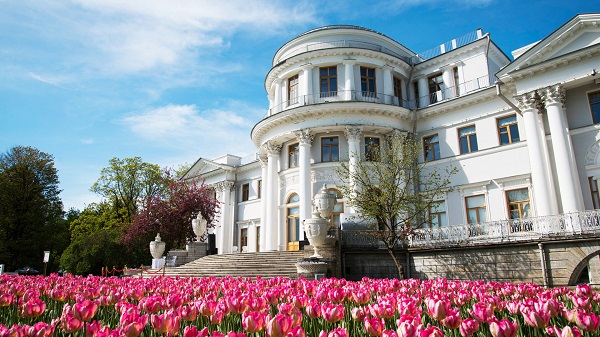

Kirov Central Park of Culture and Recreation
The Central Park of Culture and Recreation named after Sergei Kirov is the oldest park in St. Petersburg. Its architecture and layout are a masterpiece of the early 19th century landscape design, created by the famous architect Carlo Rossi. In its contemporary period, the Park combines beauty and sophistication of the previous centuries with possibilities of casual recreation for residents and guests of St. Petersburg. Every year the Park hosts the best open-air events of the summer. Tulip blossom season is a highlight of Yelagin Island. In 2018, the tulips are in blossom on 10–26 May.
The Park has two entrances: from the Stary Teatr Square through the 1st Yelagin Bridge and from Primorsky Prospect through the 3rd Yelagin Bridge.
On weekdays, the admission to the park is free.
26–27 May: Premium Package Participants can enter the park upon presenting the badge.
Tours and other additional services are covered by the participants.
The Park has two entrances: from the Stary Teatr Square through the 1st Yelagin Bridge and from Primorsky Prospect through the 3rd Yelagin Bridge.
On weekdays, the admission to the park is free.
26–27 May: Premium Package Participants can enter the park upon presenting the badge.
Tours and other additional services are covered by the participants.
26 May
09:00–22:00 

Catherine and Alexander Parks
The magnificent palace complex at Tsarskoye Selo would not be complete without its parks, the most important of which, Catherine and Alexander, are named after the palaces that grace their grounds.
Catherine Park is divided into two parts – the regular Old Garden and an English landscaped park. Symmetry lies at the heart of the design of the Old Garden, with the palace at its centre, and strictly mapped out avenues, squares, pavilions, and sculptures.
Alexander Park spans around 200 hectares and flanks the courtyard of Catherine Palace. It is also divided into a regular part (the New Garden) and a landscaped park.
Premium Package participants can present their badge to gain access.
Please note that participants must pay for guided tours and other additional services separately.
Catherine Park is divided into two parts – the regular Old Garden and an English landscaped park. Symmetry lies at the heart of the design of the Old Garden, with the palace at its centre, and strictly mapped out avenues, squares, pavilions, and sculptures.
Alexander Park spans around 200 hectares and flanks the courtyard of Catherine Palace. It is also divided into a regular part (the New Garden) and a landscaped park.
Premium Package participants can present their badge to gain access.
Please note that participants must pay for guided tours and other additional services separately.
26 May
09:00–21:00 

Peterhof State Museum-Reserve
The Peterhof State Museum-Reserve is the capital of fountains. It attracts thousands of tourists every year. Forum guests will be able to enjoy the Lower Park, one of the most beautiful parks in Europe. It is graced by 150 completely different fountains: from colossal cascades, including the Grand Cascade that features the famous statue of Samson in the centre of the ensemble, to trick fountains, which delight children and adults alike.
The Grand Cascade is officially switched on at 11:00 every day.
Premium Package participants can present their badge to gain access.
Please note that participants must pay for guided tours and other additional services (including admission to the Grand Peterhof Palace) separately.
The Grand Cascade is officially switched on at 11:00 every day.
Premium Package participants can present their badge to gain access.
Please note that participants must pay for guided tours and other additional services (including admission to the Grand Peterhof Palace) separately.
26 May
10:00–20:15 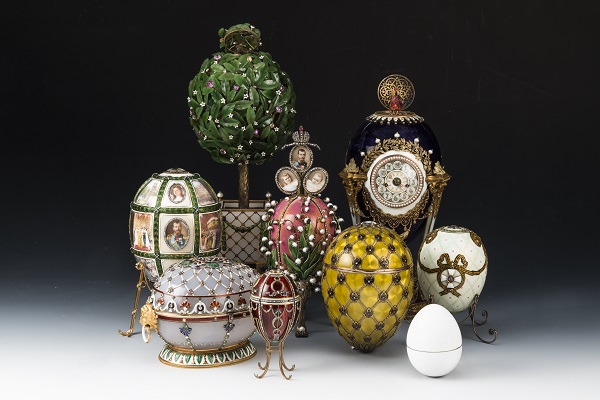

The Fabergé Museum
The Fabergé Museum, in the Shuvalov Palace, houses the world’s largest collection of works by the House of Fabergé. Here you can not only appreciate the exquisite jewellery masterpieces from the Imperial Easter Series commissioned by the two last Russian Emperors, but also cabinet gifts, lapidary art, silver, enamel, and jewelled Russian icons, all crafts in which Fabergé specialized.
Premium package holders can present their SPIEF 2018 badge to gain access to the museum.
Please note that participants must independently pay for excursions and other additional services.
Premium package holders can present their SPIEF 2018 badge to gain access to the museum.
Please note that participants must independently pay for excursions and other additional services.
26 May
10:00–17:00 

State Museum of Political History of Russia
The museum’s central exhibition, Man and State Power in Russia from the Nineteenth to the Twenty-First Centuries, presents a comprehensive interpretation of Russian political history from the time of Catherine II to the present day. The 12 sections of the exhibit reflect the key events in the country’s history: political regime changes and wars, revolutions and reforms, and periods of government liberalization as well as periods of strengthening dictatorship. Exhibits and works of art, eyewitness accounts, and ‘voices from history’ show how the actions of those who held the reins of power, as well as those of the most ordinary people, influenced the course of history.
The new permanent exhibit The Empire on the Way to Modernization is devoted to the most important political, economic, and social changes that took place in the Russian Empire in the nineteenth and early twentieth centuries, and how these changes influenced people’s lives. The unique items and multimedia tools describe the internal and external factors that pushed the authorities to reform. The heroes of the exhibit include reformers and retrogrades, as well as revolutionaries and defenders of traditional values. Each had their own ideas about the ways in which the country should develop.
Premium Package participants can present their badge to gain access to the museum.
Please note that participants must pay for guided tours and other additional services separately.
The new permanent exhibit The Empire on the Way to Modernization is devoted to the most important political, economic, and social changes that took place in the Russian Empire in the nineteenth and early twentieth centuries, and how these changes influenced people’s lives. The unique items and multimedia tools describe the internal and external factors that pushed the authorities to reform. The heroes of the exhibit include reformers and retrogrades, as well as revolutionaries and defenders of traditional values. Each had their own ideas about the ways in which the country should develop.
Premium Package participants can present their badge to gain access to the museum.
Please note that participants must pay for guided tours and other additional services separately.
26 May
10:00–18:00 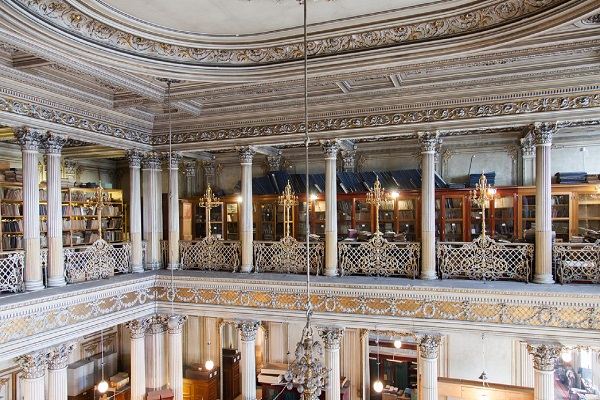

Manuscript Treasures of the East on the Banks of the Neva
This exhibition presents manuscript masterpieces from the Near and Far East. The Institute’s manuscript collection is one of the largest in the world, and the biggest in Russia. It includes more than 115,000 items in 65 dead and living languages. The unique collection is housed in the luxurious interiors of the New Michael Palace, a striking example of nineteenth-century palace architecture.
Please present your SPIEF 2018 badge to gain access to the exhibition.
Please present your SPIEF 2018 badge to gain access to the exhibition.
26 May
10:00–18:00 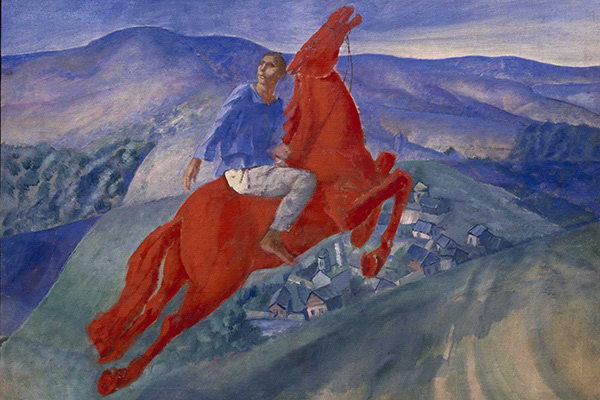

Kuzma Petrov-Vodkin. On the 140th Anniversary of the Artist’s Birth
Kuzma Petrov-Vodkin’s stature as a genius of the twentieth century is more clearly evident today than ever. His impact on the culture of his era places him in the company of such artistic figures as Kazimir Malevich, Pavel Filonov, and Wassily Kandinsky. This exhibition in the halls of the Benois Wing displays the artist’s works in stages, celebrating all periods of his creative life through both known and forgotten pieces drawn from the collections of numerous museums and private collections. Among the works featured are such masterpieces as Bathing of the Red Horse, The Mother of God, Softener of Evil Hearts, Petrograd Madonna, Death of a Commissar, Alarm, and others.
Premium Package participants can present their badge to gain access to the exhibition.
Please note that participants must pay for guided tours and other additional services separately.
Premium Package participants can present their badge to gain access to the exhibition.
Please note that participants must pay for guided tours and other additional services separately.
26 May
10:00–18:00 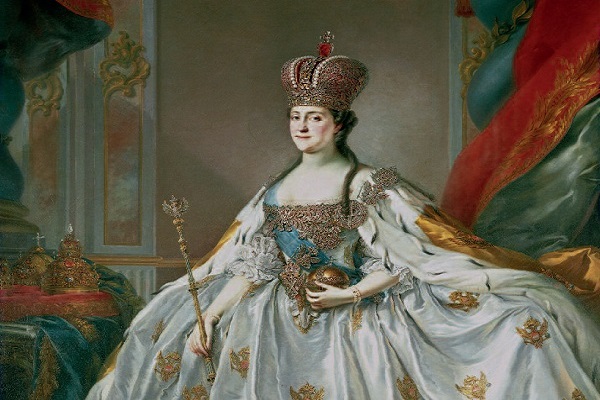

Catherine the Great in Russia and Beyond
Diverse in materials and themes but with a single cultural and historical focus, this exhibition tells the story of significant events in Russian history using over 400 exhibits from the visual and applied arts. It features paintings and graphic works, sculpture, porcelain, glassware, works of applied art, costumes, and archival documents.
Premium Package participants can present their badge to gain access to the exhibition.
Please note that participants must pay for guided tours and other additional services separately.
Premium Package participants can present their badge to gain access to the exhibition.
Please note that participants must pay for guided tours and other additional services separately.
26 May
10:00–18:00 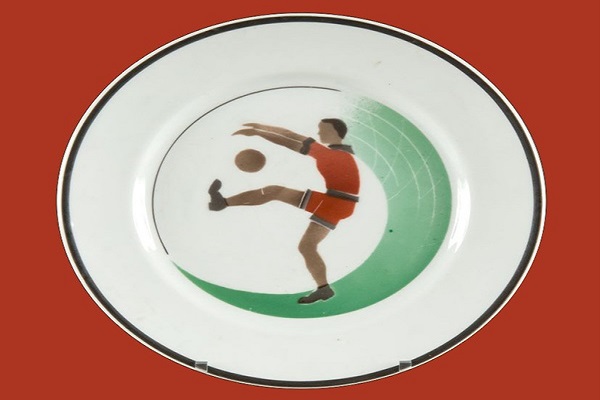

Sport in Soviet Porcelain, Graphic Arts, and Sculpture
Drawn from the collections of the Russian State Museum, the State Hermitage, and private owners, the approximately 350 examples of domestic ceramics dating from the 1920s to the beginning of the 1990s in this exhibition trace the new artistic approaches and motifs applied by artists over various periods of national history, and explore how the portrayal of sports and a healthy lifestyle in the visual arts has changed.
Premium Package participants can present their badge to gain access to the exhibition.
Please note that participants must pay for guided tours and other additional services separately.
Premium Package participants can present their badge to gain access to the exhibition.
Please note that participants must pay for guided tours and other additional services separately.
26 May
10:00–18:00 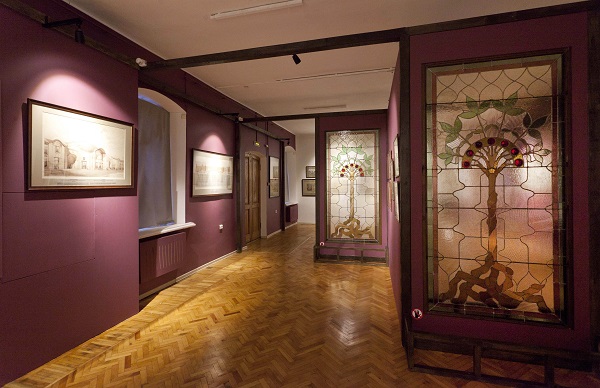

Art Nouveau of St. Petersburg
This exhibition is devoted to one of the most interesting periods in the cultural history of St. Petersburg: the turn of the twentieth century, which is often called the Art Nouveau period.
A whole layer of St. Petersburg fin de siècle city culture was associated with the Art Nouveau style, and this large-scale exhibition in the Peter and Paul Fortress, which presents a very rich collection of works in the Art Nouveau style, offers a reminder of that era.
It features architectural drawings, decorative and architectural details of St. Petersburg buildings, furniture, lighting fixtures, porcelain and glassware, women’s clothing, shoes, and accessories.
Premium Package participants can present their badge to gain access to the exhibition.
Please note that participants must pay for guided tours and other additional services separately.
A whole layer of St. Petersburg fin de siècle city culture was associated with the Art Nouveau style, and this large-scale exhibition in the Peter and Paul Fortress, which presents a very rich collection of works in the Art Nouveau style, offers a reminder of that era.
It features architectural drawings, decorative and architectural details of St. Petersburg buildings, furniture, lighting fixtures, porcelain and glassware, women’s clothing, shoes, and accessories.
Premium Package participants can present their badge to gain access to the exhibition.
Please note that participants must pay for guided tours and other additional services separately.
26 May
10:00–18:00 

Pavlovsk State Museum
Pavlovsk Palace and Park constitutes a monument to the architecture of the late eighteenth and early nineteenth centuries. The prominent architects, decorators, and painters of the eighteenth and nineteenth centuries who contributed to its creation include Charles Cameron, Vincenzo Brenna, Andrey Voronikhin, Giacomo Quarenghi, Carlo Rossi, Pietro Gonzaga, and others.
Pavlovsk Palace served as the residence of emperors and grand dukes. The names of Paul I and Maria Feodorovna, and the Grand Dukes Mikhail Pavlovich and Konstantin Konstantinovich are associated with this residence. Today, Pavlovsk Palace is a museum with a collection of more than 57,000 items. It includes collections of Russian and Western European arts and crafts, paintings, and drawings, as well as a collection of antique sculptures.
The halls of the palace house a number of expositions devoted to various topics: The Costume Museum, A Woman’s World and Her Hobbies, Church Vestments and Church Plate from the Collections of the Pavlovsk State Museum, and The Russian Residential Interior of the Nineteenth Century.
Premium Package participants can present their badge to gain access to the museum.
Please note that participants must pay for guided tours and other additional services separately.
Pavlovsk Palace served as the residence of emperors and grand dukes. The names of Paul I and Maria Feodorovna, and the Grand Dukes Mikhail Pavlovich and Konstantin Konstantinovich are associated with this residence. Today, Pavlovsk Palace is a museum with a collection of more than 57,000 items. It includes collections of Russian and Western European arts and crafts, paintings, and drawings, as well as a collection of antique sculptures.
The halls of the palace house a number of expositions devoted to various topics: The Costume Museum, A Woman’s World and Her Hobbies, Church Vestments and Church Plate from the Collections of the Pavlovsk State Museum, and The Russian Residential Interior of the Nineteenth Century.
Premium Package participants can present their badge to gain access to the museum.
Please note that participants must pay for guided tours and other additional services separately.
26 May
10:00–17:00 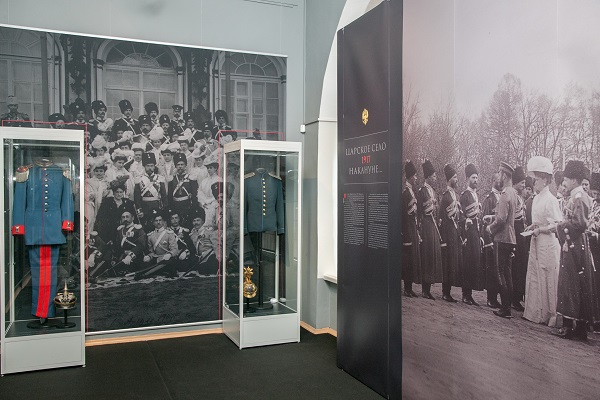

Tsarskoye Selo 1917: On the eve ...
This exhibition describes the life of the Tsarskoye Selo residence from February to October 1917, the period between the two revolutions. This was a time when one era (the monarchy) was drawing to a close and a new era, full of revolutionary upheavals, was dawning. At that time, the residence at Tsarskoye Selo still existed but it had already lost its imperial status. The last Russian emperor and his family were still living in the Alexander Palace, but he was now citizen Romanov, held under house arrest by the Provisional Government. Starting in spring 1917, an Artistic and Historical Commission was set up at the Imperial Palace of Tsarskoye Selo to inventory the newly nationalized property and create a museum in the former residence.
Premium Package participants can present their badge to gain access to the exhibition.
Please note that participants must pay for guided tours and other additional services separately.
Premium Package participants can present their badge to gain access to the exhibition.
Please note that participants must pay for guided tours and other additional services separately.
26 May
10:00–17:00 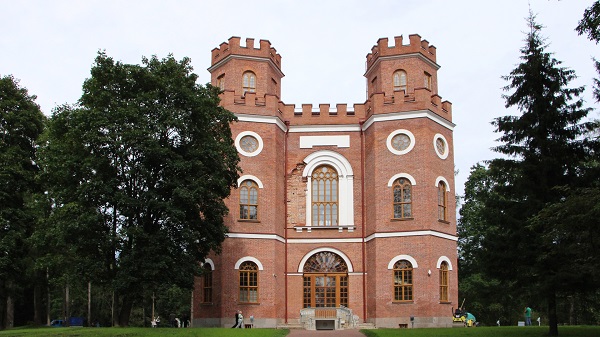

The Arsenal of Tsarskoye Selo: The Imperial Arms Collection
The Arsenal of Tsarskoye Selo: The Imperial Arms Collection exhibition, curated in conjunction with the State Hermitage Museum, first opened in 2016. The exhibited items include a collection of Eastern bladed weapons, firearms from the eighteenth and nineteenth centuries, and European arms and equipment from the sixteenth and seventeenth centuries, including armour, helmets, halberds, swords, and horse harnesses. The State Hermitage contributed some rare items from its collection for temporary display, including some sixteenth-century armour from Nicholas I’s collection.
Premium Package participants can present their badge to gain access to the exhibition.
Please note that participants must pay for guided tours and other additional services separately.
Premium Package participants can present their badge to gain access to the exhibition.
Please note that participants must pay for guided tours and other additional services separately.
26 May
10:00–17:00 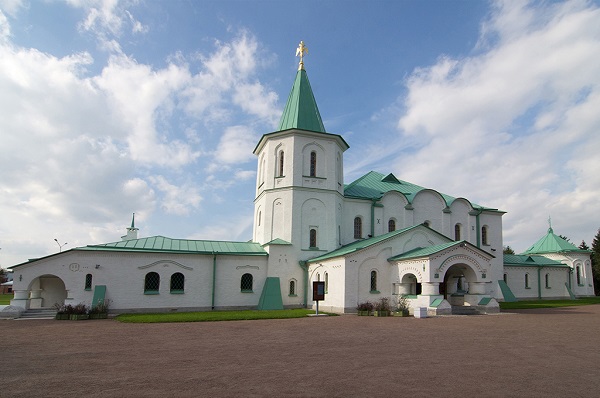

Russia in the Great War Museum
This is the first museum in modern Russia dedicated to the tragic World War I period (1914–1917). It is located in the Sovereign’s Martial Chamber, conceived by Emperor Nicholas II as a pantheon of military glory.
The exhibition mainly consists of genuine military and household items belonging to those who took part in the First World War, as well as documentary and photographic materials from the Tsarskoye Selo Museum Reserve collection.
Premium Package participants can present their badge to gain access to the museum.
Please note that participants must pay for guided tours and other additional services separately.
The exhibition mainly consists of genuine military and household items belonging to those who took part in the First World War, as well as documentary and photographic materials from the Tsarskoye Selo Museum Reserve collection.
Premium Package participants can present their badge to gain access to the museum.
Please note that participants must pay for guided tours and other additional services separately.
26 May
10:00–22:00 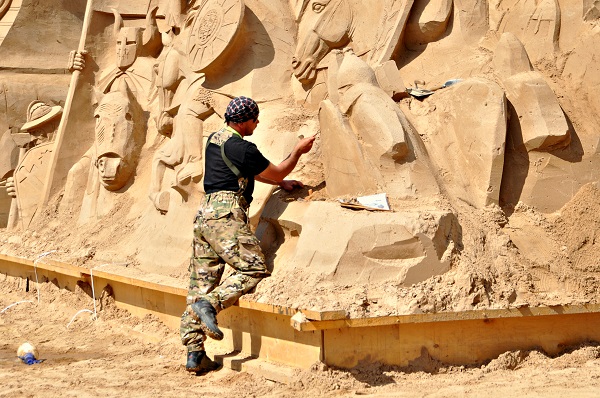

2018 Sand Sculpture Festival
An annual sand sculpture festival is held outside on the beach at the Peter and Paul Fortress, amazing visitors year after year with its grand scale and superb craftsmanship.
Premium Package participants can present their badge to gain access to the festival.
Please note that participants must pay for guided tours and other additional services separately.
Premium Package participants can present their badge to gain access to the festival.
Please note that participants must pay for guided tours and other additional services separately.
26 May
10:30–17:00 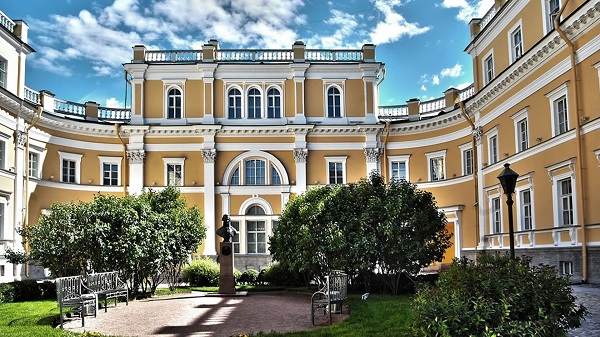

Gavrila Derzhavin Estate Museum
The Gavrila Derzhavin Estate Museum is a unique cultural heritage site that was restored between 2003 and 2011. The complex consists of a mansion in which the poet lived from 1791 to 1816, the House Theatre, and the Greenhouse and Garden.
The poet’s house (central building) contains the Museum of Gavrila Derzhavin and the Russian Literature of His Time. The literary heritage exhibits occupy 16 interior rooms, including the room where members of the Colloquy of Lovers of the Russian Word met, as well as the poet’s office, kitchen, and ice cellar. The exhibits include books and manuscripts, as well as works of fine, decorative, and applied art.
In the eastern building is the literary exhibit The Players of the Russian Lyre. From Gavrila Derzhavin to Alexander Pushkin, featuring paintings, engravings, arts and crafts, coins and medallions, and portrait galleries of figures from the literature, history, and culture of the second half of the eighteenth and early nineteenth centuries.
The western building houses the exhibits In the White Lustre of Porcelain and National Pushkin Museum: Through the Pages of History, which recount the museum’s history of over 100 years. There are also two more exhibits: Pushkin on the Playbill: The Poet on the Twentieth- and Twenty-First-Century Stage and Pushkin’s Fairy Tales.
Premium Package participants can present their badge to gain access to the museum.
Please note that participants must pay for guided tours and other additional services separately.
The poet’s house (central building) contains the Museum of Gavrila Derzhavin and the Russian Literature of His Time. The literary heritage exhibits occupy 16 interior rooms, including the room where members of the Colloquy of Lovers of the Russian Word met, as well as the poet’s office, kitchen, and ice cellar. The exhibits include books and manuscripts, as well as works of fine, decorative, and applied art.
In the eastern building is the literary exhibit The Players of the Russian Lyre. From Gavrila Derzhavin to Alexander Pushkin, featuring paintings, engravings, arts and crafts, coins and medallions, and portrait galleries of figures from the literature, history, and culture of the second half of the eighteenth and early nineteenth centuries.
The western building houses the exhibits In the White Lustre of Porcelain and National Pushkin Museum: Through the Pages of History, which recount the museum’s history of over 100 years. There are also two more exhibits: Pushkin on the Playbill: The Poet on the Twentieth- and Twenty-First-Century Stage and Pushkin’s Fairy Tales.
Premium Package participants can present their badge to gain access to the museum.
Please note that participants must pay for guided tours and other additional services separately.
26 May
10:30–18:00 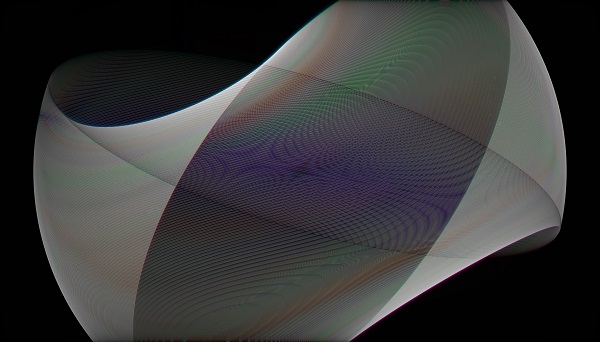

Innovation as a Method
Artists working with innovative artistic language will present works in which the interrelation of artistic thought, new physical materials, and technological processes is examined. Among the themes addressed by participants in the exhibition are artificial intelligence, quantum technologies, and blockchain.
Some of the works have been created in cooperation with a number of scientific laboratories. These include joint projects between: Dmitri Gutov and the Russian Quantum Centre (Moscow), Pavel Pepperstein and the ChemRar High-Tech Centre (Moscow), and Kostya Novoselov and the National Graphene Institute (Manchester).
Artists: Kevin Abosch (US), Siebren Versteeg (US), Dmitri Gutov (Russia), Dmitry Kawarga (Russia), Egor Kraft (Russia), the Where Dogs Run creative collective (Russia), Misha MOST (Russia), Kostya Novoselov (UK), Pavel Pepperstein (Russia), Daniel Rozin (US), Martha Fiennes (UK), Bjoern Schuelke (Germany), and Stain (Russia).
Dmitry Ozerkov (The State Hermitage Museum), Victoria Kondrashova (RDI. Creative Company).
The exhibition will be open until 3 June 2018
A ticket to the State Hermitage Museum, purchased at the museum’s ticket offices, will grant automatic access to this exhibition.
Some of the works have been created in cooperation with a number of scientific laboratories. These include joint projects between: Dmitri Gutov and the Russian Quantum Centre (Moscow), Pavel Pepperstein and the ChemRar High-Tech Centre (Moscow), and Kostya Novoselov and the National Graphene Institute (Manchester).
Artists: Kevin Abosch (US), Siebren Versteeg (US), Dmitri Gutov (Russia), Dmitry Kawarga (Russia), Egor Kraft (Russia), the Where Dogs Run creative collective (Russia), Misha MOST (Russia), Kostya Novoselov (UK), Pavel Pepperstein (Russia), Daniel Rozin (US), Martha Fiennes (UK), Bjoern Schuelke (Germany), and Stain (Russia).
Dmitry Ozerkov (The State Hermitage Museum), Victoria Kondrashova (RDI. Creative Company).
The exhibition will be open until 3 June 2018
A ticket to the State Hermitage Museum, purchased at the museum’s ticket offices, will grant automatic access to this exhibition.
26 May
10:30–17:30 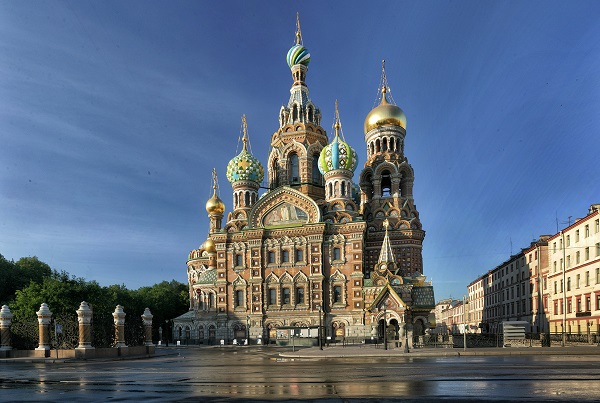

Church of the Saviour on Blood
A unique monument to Alexander II The Liberator, the Church of the Saviour on Blood (Cathedral of the Resurrection of Christ) is a stand-out architectural landmark in the centre of St. Petersburg.
The cathedral features Russia’s largest collection of mosaics, slabs of varicoloured Italian marble, ornamental stones from the Urals and the Altai, and a collection of Russian heraldic mosaics.
Premium Package participants can present their badge to gain access to the church.
Please note that participants must pay for guided tours and other additional services separately.
The cathedral features Russia’s largest collection of mosaics, slabs of varicoloured Italian marble, ornamental stones from the Urals and the Altai, and a collection of Russian heraldic mosaics.
Premium Package participants can present their badge to gain access to the church.
Please note that participants must pay for guided tours and other additional services separately.
26 May
10:30–17:30 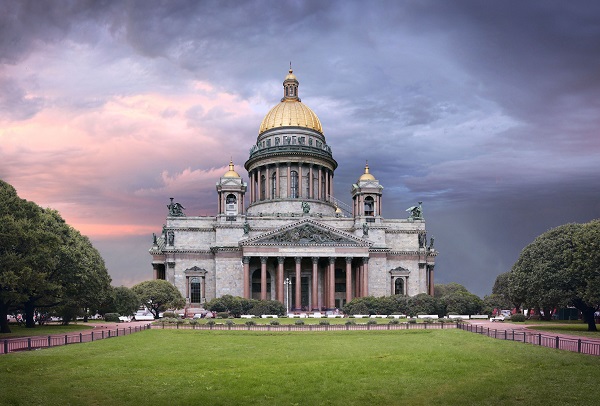

St Isaac’s Cathedral State Museum
St. Isaac’s Cathedral is an outstanding monument to late Russian classicism from the mid-nineteenth century.
The remarkable interior of the cathedral features all kinds of monumental and decorative art, including painting, sculpture, mosaics, and coloured facing stones. The cathedral’s main iconostasis is decorated with malachite and lapis lazuli columns. The main altar features a stained-glass window of the ‘Risen Christ’, which is an unconventional decoration for an Orthodox church.
Premium Package participants can present their badge to gain access to the museum.
Please note that participants must pay for guided tours and other additional services (including admission to the Colonnades) separately.
The remarkable interior of the cathedral features all kinds of monumental and decorative art, including painting, sculpture, mosaics, and coloured facing stones. The cathedral’s main iconostasis is decorated with malachite and lapis lazuli columns. The main altar features a stained-glass window of the ‘Risen Christ’, which is an unconventional decoration for an Orthodox church.
Premium Package participants can present their badge to gain access to the museum.
Please note that participants must pay for guided tours and other additional services (including admission to the Colonnades) separately.
26 May
11:00–16:30 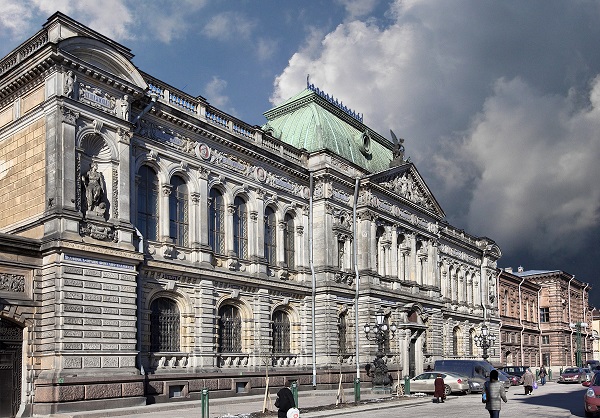

Museum of Applied Art, St. Petersburg Stieglitz School of Art and Design
The exhibition, which sprawls across 14 halls of the museum, boasts about 2,000 items. In the entrance hall, which opens the exhibition, visitors can enjoy temporary installations consisting of items from the museum’s collections. The small Italian galleries display unique examples of furniture from various historical periods. The Teremok Hall features examples of Russian applied art, including costumes, a collection of Russian folk dolls, printed textiles, forged metal items, and furniture. The collection of Western European ceramics and porcelain consists of a wide and diverse range of pieces: German stoneware from the sixteenth to the eighteenth centuries, Italian maiolica from the sixteenth century, unique porcelains from Berlin, Meissen, and Sèvres dating from the eighteenth century, and much more.
Please present your SPIEF 2018 badge to gain access to the museum.
Visits as part of a sightseeing tour must be reserved in advance. Detailed information is available in your personal web office.
Please present your SPIEF 2018 badge to gain access to the museum.
Visits as part of a sightseeing tour must be reserved in advance. Detailed information is available in your personal web office.
26 May
11:00–17:00 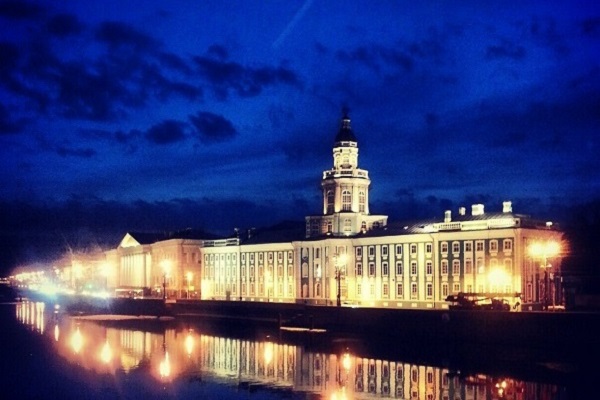

Peter the Great Museum of Anthropology and Ethnography (Kunstkamera)
The museum presents the traditional cultures of peoples from around the world (Native Americans, Eskimos, Japanese, Indians, Mongols, etc.) as well as some of the first natural science collections, which date back to the time of Peter the Great. The Mikhail Lomonosov and the Eighteenth-Century Academy of Sciences exhibit offers visitors an opportunity to learn about the history of Russian science. There is also an option to enjoy guided tours of the First Astronomical Observatory of the Academy of Sciences and the Gottorp (Greater Academic) Globe exhibits. The museum is currently presenting the following temporary exhibit: Dervishes: Images and Words.
Premium Package participants can present their badge to gain access to the museum.
Please note that participants must pay for guided tours and other additional services separately.
Premium Package participants can present their badge to gain access to the museum.
Please note that participants must pay for guided tours and other additional services separately.
26 May
11:00–22:00 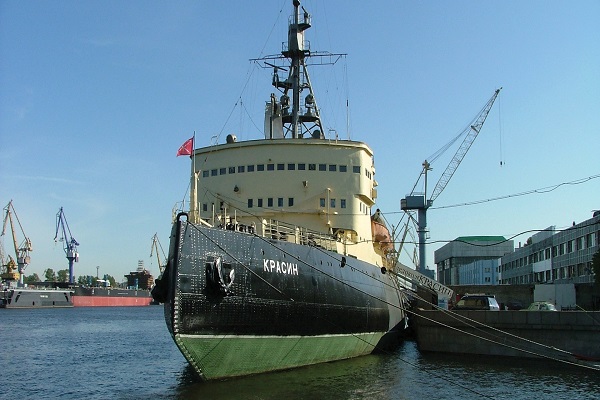

Come aboard the legendary icebreaker Krasin
This tour will take you on an amazing journey through the pages of the history of the Russian icebreaker fleet and Arctic exploration. The Krasin was built in 1917 in England by order of the Government of the Russian Empire. It went on to participate in Arctic rescue expeditions and came to the aid of civilian vessels. It circumnavigated the world twice, spent the entirety of World War II guiding polar convoys, heroically worked on the Northern Sea Route, and explored oil and gas fields on the Russian Arctic shelf. In 1928, the crew of the icebreaker was awarded the highest honour of the Soviet Union for rescuing the crew of Italian aeronauts led by the famous polar explorer, inventor, and general Umberto Nobile, who had become stranded when their airship, the Italia, crashed off the coast of Spitsbergen.
Guided tours start on the hour as groups are formed. The last tour leaves at 21:00.
Premium Package participants can present their badge to gain access. Participants in other categories can purchase admission at a reduced price on presentation of their badge.
Guided tours start on the hour as groups are formed. The last tour leaves at 21:00.
Premium Package participants can present their badge to gain access. Participants in other categories can purchase admission at a reduced price on presentation of their badge.
26 May
12:00–18:00 

Space. Human Stories
The Space. Human Stories exhibition is dedicated to the figures who made an invaluable contribution to Russian space exploration and those who worked ‘behind the scenes’ of the USSR’s march to space. Visitors will learn about several stories from the creators of the Soviet space programme and will be able to view unique documents and artefacts related to the programme. Rare materials from private archives will be presented for the first time. Works by contemporary artists on the theme of space will be presented in a new dedicated space.
Please present your SPIEF 2018 badge to gain access to the exhibition.
Please present your SPIEF 2018 badge to gain access to the exhibition.
26 May
12:00–20:00 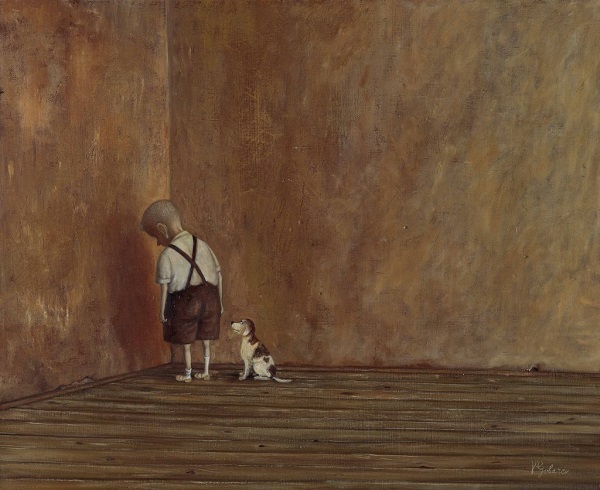

Caution: Children at Play! Exhibition Project
Over 110 artisans, including painters, drawing artists, sculptors, and video artist participate in this exhibition project. All of them belong to different generations representing different traditions: traditional classical art, underground art, primitivism and hyperrealism, as well as many other trends gaining ground in contemporary visual art. Among the participants, one can find both famous names and young authors: Nikolay Ionin (1890-1948), Nikolay Andronov (1929-98), Oleg Tselkov (born 1934), Ilya Kabakov (born 1933), Oskar Rabin (born 1928), Solomon Rossin (born 1937), Maxim Kantor (born 1957), Vladimir Dubosarsky (born 1964), Leonid Tskhe (born 1983) and many others. Every artist has their own journey, their own childhood and their own memories of it.
Premium and Standard Package Participants can enter the exhibition upon presenting the badge.
Tours and other additional services are covered by the participant.
Premium and Standard Package Participants can enter the exhibition upon presenting the badge.
Tours and other additional services are covered by the participant.
26 May
16:00–20:00 

A Twenty-First Century Library in the Historic Building of the Holy Governing Synod
The Presidential Library is one of the most important information, cultural, and educational centres in Russia. The tour will introduce visitors to the historical interiors of the Synod building and the modern halls of the Presidential Library, which were designed to host public and state events. The latter spaces include a conference hall and a multimedia, multipurpose hall, which are equipped with the latest technology, including 3D projection equipment. Part of the tour will feature a presentation of the library’s electronic collections in the Electronic Reading Room and on the Internet portal. These collections consist of materials on the history of Russia; the theory and practice of Russian statehood; and Russian language, literature, geography, and law. Visitors will have a chance to visit both temporary and permanent exhibits in the Constitution Hall, which houses the only inaugural copy of the Constitution of the Russian Federation.
Guided tours will be conducted twice a day:
– at 16:00 and 19:00 on 24 and 26 May
– at 16:00 and 17:30 on 25 May
Groups should assemble and participants should meet their guides in the main foyer of the Presidential Library.
Please present your SPIEF 2018 participant badge to join the tour.
Guided tours will be conducted twice a day:
– at 16:00 and 19:00 on 24 and 26 May
– at 16:00 and 17:30 on 25 May
Groups should assemble and participants should meet their guides in the main foyer of the Presidential Library.
Please present your SPIEF 2018 participant badge to join the tour.
27 May
06:00–00:00 

Kirov Central Park of Culture and Recreation
The Central Park of Culture and Recreation named after Sergei Kirov is the oldest park in St. Petersburg. Its architecture and layout are a masterpiece of the early 19th century landscape design, created by the famous architect Carlo Rossi. In its contemporary period, the Park combines beauty and sophistication of the previous centuries with possibilities of casual recreation for residents and guests of St. Petersburg. Every year the Park hosts the best open-air events of the summer. Tulip blossom season is a highlight of Yelagin Island. In 2018, the tulips are in blossom on 10–26 May.
The Park has two entrances: from the Stary Teatr Square through the 1st Yelagin Bridge and from Primorsky Prospect through the 3rd Yelagin Bridge.
On weekdays, the admission to the park is free.
26–27 May: Premium Package Participants can enter the park upon presenting the badge.
Tours and other additional services are covered by the participants.
The Park has two entrances: from the Stary Teatr Square through the 1st Yelagin Bridge and from Primorsky Prospect through the 3rd Yelagin Bridge.
On weekdays, the admission to the park is free.
26–27 May: Premium Package Participants can enter the park upon presenting the badge.
Tours and other additional services are covered by the participants.
27 May
09:00–22:00 

Catherine and Alexander Parks
The magnificent palace complex at Tsarskoye Selo would not be complete without its parks, the most important of which, Catherine and Alexander, are named after the palaces that grace their grounds.
Catherine Park is divided into two parts – the regular Old Garden and an English landscaped park. Symmetry lies at the heart of the design of the Old Garden, with the palace at its centre, and strictly mapped out avenues, squares, pavilions, and sculptures.
Alexander Park spans around 200 hectares and flanks the courtyard of Catherine Palace. It is also divided into a regular part (the New Garden) and a landscaped park.
Premium Package participants can present their badge to gain access.
Please note that participants must pay for guided tours and other additional services separately.
Catherine Park is divided into two parts – the regular Old Garden and an English landscaped park. Symmetry lies at the heart of the design of the Old Garden, with the palace at its centre, and strictly mapped out avenues, squares, pavilions, and sculptures.
Alexander Park spans around 200 hectares and flanks the courtyard of Catherine Palace. It is also divided into a regular part (the New Garden) and a landscaped park.
Premium Package participants can present their badge to gain access.
Please note that participants must pay for guided tours and other additional services separately.
27 May
09:00–20:00 

Peterhof State Museum-Reserve
The Peterhof State Museum-Reserve is the capital of fountains. It attracts thousands of tourists every year. Forum guests will be able to enjoy the Lower Park, one of the most beautiful parks in Europe. It is graced by 150 completely different fountains: from colossal cascades, including the Grand Cascade that features the famous statue of Samson in the centre of the ensemble, to trick fountains, which delight children and adults alike.
The Grand Cascade is officially switched on at 11:00 every day.
Premium Package participants can present their badge to gain access.
Please note that participants must pay for guided tours and other additional services (including admission to the Grand Peterhof Palace) separately.
The Grand Cascade is officially switched on at 11:00 every day.
Premium Package participants can present their badge to gain access.
Please note that participants must pay for guided tours and other additional services (including admission to the Grand Peterhof Palace) separately.
27 May
10:00–18:00 

Kuzma Petrov-Vodkin. On the 140th Anniversary of the Artist’s Birth
Kuzma Petrov-Vodkin’s stature as a genius of the twentieth century is more clearly evident today than ever. His impact on the culture of his era places him in the company of such artistic figures as Kazimir Malevich, Pavel Filonov, and Wassily Kandinsky. This exhibition in the halls of the Benois Wing displays the artist’s works in stages, celebrating all periods of his creative life through both known and forgotten pieces drawn from the collections of numerous museums and private collections. Among the works featured are such masterpieces as Bathing of the Red Horse, The Mother of God, Softener of Evil Hearts, Petrograd Madonna, Death of a Commissar, Alarm, and others.
Premium Package participants can present their badge to gain access to the exhibition.
Please note that participants must pay for guided tours and other additional services separately.
Premium Package participants can present their badge to gain access to the exhibition.
Please note that participants must pay for guided tours and other additional services separately.
27 May
10:00–18:00 

Catherine the Great in Russia and Beyond
Diverse in materials and themes but with a single cultural and historical focus, this exhibition tells the story of significant events in Russian history using over 400 exhibits from the visual and applied arts. It features paintings and graphic works, sculpture, porcelain, glassware, works of applied art, costumes, and archival documents.
Premium Package participants can present their badge to gain access to the exhibition.
Please note that participants must pay for guided tours and other additional services separately.
Premium Package participants can present their badge to gain access to the exhibition.
Please note that participants must pay for guided tours and other additional services separately.
27 May
10:00–18:00 

Sport in Soviet Porcelain, Graphic Arts, and Sculpture
Drawn from the collections of the Russian State Museum, the State Hermitage, and private owners, the approximately 350 examples of domestic ceramics dating from the 1920s to the beginning of the 1990s in this exhibition trace the new artistic approaches and motifs applied by artists over various periods of national history, and explore how the portrayal of sports and a healthy lifestyle in the visual arts has changed.
Premium Package participants can present their badge to gain access to the exhibition.
Please note that participants must pay for guided tours and other additional services separately.
Premium Package participants can present their badge to gain access to the exhibition.
Please note that participants must pay for guided tours and other additional services separately.
27 May
10:00–18:00 

Pavlovsk State Museum
Pavlovsk Palace and Park constitutes a monument to the architecture of the late eighteenth and early nineteenth centuries. The prominent architects, decorators, and painters of the eighteenth and nineteenth centuries who contributed to its creation include Charles Cameron, Vincenzo Brenna, Andrey Voronikhin, Giacomo Quarenghi, Carlo Rossi, Pietro Gonzaga, and others.
Pavlovsk Palace served as the residence of emperors and grand dukes. The names of Paul I and Maria Feodorovna, and the Grand Dukes Mikhail Pavlovich and Konstantin Konstantinovich are associated with this residence. Today, Pavlovsk Palace is a museum with a collection of more than 57,000 items. It includes collections of Russian and Western European arts and crafts, paintings, and drawings, as well as a collection of antique sculptures.
The halls of the palace house a number of expositions devoted to various topics: The Costume Museum, A Woman’s World and Her Hobbies, Church Vestments and Church Plate from the Collections of the Pavlovsk State Museum, and The Russian Residential Interior of the Nineteenth Century.
Premium Package participants can present their badge to gain access to the museum.
Please note that participants must pay for guided tours and other additional services separately.
Pavlovsk Palace served as the residence of emperors and grand dukes. The names of Paul I and Maria Feodorovna, and the Grand Dukes Mikhail Pavlovich and Konstantin Konstantinovich are associated with this residence. Today, Pavlovsk Palace is a museum with a collection of more than 57,000 items. It includes collections of Russian and Western European arts and crafts, paintings, and drawings, as well as a collection of antique sculptures.
The halls of the palace house a number of expositions devoted to various topics: The Costume Museum, A Woman’s World and Her Hobbies, Church Vestments and Church Plate from the Collections of the Pavlovsk State Museum, and The Russian Residential Interior of the Nineteenth Century.
Premium Package participants can present their badge to gain access to the museum.
Please note that participants must pay for guided tours and other additional services separately.
27 May
10:00–17:00 

Russia in the Great War Museum
This is the first museum in modern Russia dedicated to the tragic World War I period (1914–1917). It is located in the Sovereign’s Martial Chamber, conceived by Emperor Nicholas II as a pantheon of military glory.
The exhibition mainly consists of genuine military and household items belonging to those who took part in the First World War, as well as documentary and photographic materials from the Tsarskoye Selo Museum Reserve collection.
Premium Package participants can present their badge to gain access to the museum.
Please note that participants must pay for guided tours and other additional services separately.
The exhibition mainly consists of genuine military and household items belonging to those who took part in the First World War, as well as documentary and photographic materials from the Tsarskoye Selo Museum Reserve collection.
Premium Package participants can present their badge to gain access to the museum.
Please note that participants must pay for guided tours and other additional services separately.
27 May
10:00–17:00 

Tsarskoye Selo 1917: On the eve ...
This exhibition describes the life of the Tsarskoye Selo residence from February to October 1917, the period between the two revolutions. This was a time when one era (the monarchy) was drawing to a close and a new era, full of revolutionary upheavals, was dawning. At that time, the residence at Tsarskoye Selo still existed but it had already lost its imperial status. The last Russian emperor and his family were still living in the Alexander Palace, but he was now citizen Romanov, held under house arrest by the Provisional Government. Starting in spring 1917, an Artistic and Historical Commission was set up at the Imperial Palace of Tsarskoye Selo to inventory the newly nationalized property and create a museum in the former residence.
Premium Package participants can present their badge to gain access to the exhibition.
Please note that participants must pay for guided tours and other additional services separately.
Premium Package participants can present their badge to gain access to the exhibition.
Please note that participants must pay for guided tours and other additional services separately.
27 May
10:00–17:00 

The Arsenal of Tsarskoye Selo: The Imperial Arms Collection
The Arsenal of Tsarskoye Selo: The Imperial Arms Collection exhibition, curated in conjunction with the State Hermitage Museum, first opened in 2016. The exhibited items include a collection of Eastern bladed weapons, firearms from the eighteenth and nineteenth centuries, and European arms and equipment from the sixteenth and seventeenth centuries, including armour, helmets, halberds, swords, and horse harnesses. The State Hermitage contributed some rare items from its collection for temporary display, including some sixteenth-century armour from Nicholas I’s collection.
Premium Package participants can present their badge to gain access to the exhibition.
Please note that participants must pay for guided tours and other additional services separately.
Premium Package participants can present their badge to gain access to the exhibition.
Please note that participants must pay for guided tours and other additional services separately.
27 May
10:00–22:00 

2018 Sand Sculpture Festival
An annual sand sculpture festival is held outside on the beach at the Peter and Paul Fortress, amazing visitors year after year with its grand scale and superb craftsmanship.
Premium Package participants can present their badge to gain access to the festival.
Please note that participants must pay for guided tours and other additional services separately.
Premium Package participants can present their badge to gain access to the festival.
Please note that participants must pay for guided tours and other additional services separately.
27 May
10:00–18:00 

Art Nouveau of St. Petersburg
This exhibition is devoted to one of the most interesting periods in the cultural history of St. Petersburg: the turn of the twentieth century, which is often called the Art Nouveau period.
A whole layer of St. Petersburg fin de siècle city culture was associated with the Art Nouveau style, and this large-scale exhibition in the Peter and Paul Fortress, which presents a very rich collection of works in the Art Nouveau style, offers a reminder of that era.
It features architectural drawings, decorative and architectural details of St. Petersburg buildings, furniture, lighting fixtures, porcelain and glassware, women’s clothing, shoes, and accessories.
Premium Package participants can present their badge to gain access to the exhibition.
Please note that participants must pay for guided tours and other additional services separately.
A whole layer of St. Petersburg fin de siècle city culture was associated with the Art Nouveau style, and this large-scale exhibition in the Peter and Paul Fortress, which presents a very rich collection of works in the Art Nouveau style, offers a reminder of that era.
It features architectural drawings, decorative and architectural details of St. Petersburg buildings, furniture, lighting fixtures, porcelain and glassware, women’s clothing, shoes, and accessories.
Premium Package participants can present their badge to gain access to the exhibition.
Please note that participants must pay for guided tours and other additional services separately.
27 May
10:30–17:30 

St Isaac’s Cathedral State Museum
St. Isaac’s Cathedral is an outstanding monument to late Russian classicism from the mid-nineteenth century.
The remarkable interior of the cathedral features all kinds of monumental and decorative art, including painting, sculpture, mosaics, and coloured facing stones. The cathedral’s main iconostasis is decorated with malachite and lapis lazuli columns. The main altar features a stained-glass window of the ‘Risen Christ’, which is an unconventional decoration for an Orthodox church.
Premium Package participants can present their badge to gain access to the museum.
Please note that participants must pay for guided tours and other additional services (including admission to the Colonnades) separately.
The remarkable interior of the cathedral features all kinds of monumental and decorative art, including painting, sculpture, mosaics, and coloured facing stones. The cathedral’s main iconostasis is decorated with malachite and lapis lazuli columns. The main altar features a stained-glass window of the ‘Risen Christ’, which is an unconventional decoration for an Orthodox church.
Premium Package participants can present their badge to gain access to the museum.
Please note that participants must pay for guided tours and other additional services (including admission to the Colonnades) separately.
27 May
10:30–17:30 

Church of the Saviour on Blood
A unique monument to Alexander II The Liberator, the Church of the Saviour on Blood (Cathedral of the Resurrection of Christ) is a stand-out architectural landmark in the centre of St. Petersburg.
The cathedral features Russia’s largest collection of mosaics, slabs of varicoloured Italian marble, ornamental stones from the Urals and the Altai, and a collection of Russian heraldic mosaics.
Premium Package participants can present their badge to gain access to the church.
Please note that participants must pay for guided tours and other additional services separately.
The cathedral features Russia’s largest collection of mosaics, slabs of varicoloured Italian marble, ornamental stones from the Urals and the Altai, and a collection of Russian heraldic mosaics.
Premium Package participants can present their badge to gain access to the church.
Please note that participants must pay for guided tours and other additional services separately.
27 May
10:30–18:00 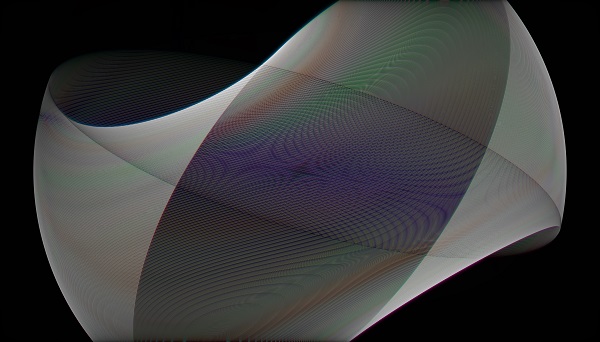

Innovation as a Method
Artists working with innovative artistic language will present works in which the interrelation of artistic thought, new physical materials, and technological processes is examined. Among the themes addressed by participants in the exhibition are artificial intelligence, quantum technologies, and blockchain.
Some of the works have been created in cooperation with a number of scientific laboratories. These include joint projects between: Dmitri Gutov and the Russian Quantum Centre (Moscow), Pavel Pepperstein and the ChemRar High-Tech Centre (Moscow), and Kostya Novoselov and the National Graphene Institute (Manchester).
Artists: Kevin Abosch (US), Siebren Versteeg (US), Dmitri Gutov (Russia), Dmitry Kawarga (Russia), Egor Kraft (Russia), the Where Dogs Run creative collective (Russia), Misha MOST (Russia), Kostya Novoselov (UK), Pavel Pepperstein (Russia), Daniel Rozin (US), Martha Fiennes (UK), Bjoern Schuelke (Germany), and Stain (Russia).
Dmitry Ozerkov (The State Hermitage Museum), Victoria Kondrashova (RDI. Creative Company).
The exhibition will be open until 3 June 2018
A ticket to the State Hermitage Museum, purchased at the museum’s ticket offices, will grant automatic access to this exhibition.
Some of the works have been created in cooperation with a number of scientific laboratories. These include joint projects between: Dmitri Gutov and the Russian Quantum Centre (Moscow), Pavel Pepperstein and the ChemRar High-Tech Centre (Moscow), and Kostya Novoselov and the National Graphene Institute (Manchester).
Artists: Kevin Abosch (US), Siebren Versteeg (US), Dmitri Gutov (Russia), Dmitry Kawarga (Russia), Egor Kraft (Russia), the Where Dogs Run creative collective (Russia), Misha MOST (Russia), Kostya Novoselov (UK), Pavel Pepperstein (Russia), Daniel Rozin (US), Martha Fiennes (UK), Bjoern Schuelke (Germany), and Stain (Russia).
Dmitry Ozerkov (The State Hermitage Museum), Victoria Kondrashova (RDI. Creative Company).
The exhibition will be open until 3 June 2018
A ticket to the State Hermitage Museum, purchased at the museum’s ticket offices, will grant automatic access to this exhibition.
27 May
11:00–17:00 

Peter the Great Museum of Anthropology and Ethnography (Kunstkamera)
The museum presents the traditional cultures of peoples from around the world (Native Americans, Eskimos, Japanese, Indians, Mongols, etc.) as well as some of the first natural science collections, which date back to the time of Peter the Great. The Mikhail Lomonosov and the Eighteenth-Century Academy of Sciences exhibit offers visitors an opportunity to learn about the history of Russian science. There is also an option to enjoy guided tours of the First Astronomical Observatory of the Academy of Sciences and the Gottorp (Greater Academic) Globe exhibits. The museum is currently presenting the following temporary exhibit: Dervishes: Images and Words.
Premium Package participants can present their badge to gain access to the museum.
Please note that participants must pay for guided tours and other additional services separately.
Premium Package participants can present their badge to gain access to the museum.
Please note that participants must pay for guided tours and other additional services separately.
27 May
12:00–20:00 

Caution: Children at Play! Exhibition Project
Over 110 artisans, including painters, drawing artists, sculptors, and video artist participate in this exhibition project. All of them belong to different generations representing different traditions: traditional classical art, underground art, primitivism and hyperrealism, as well as many other trends gaining ground in contemporary visual art. Among the participants, one can find both famous names and young authors: Nikolay Ionin (1890-1948), Nikolay Andronov (1929-98), Oleg Tselkov (born 1934), Ilya Kabakov (born 1933), Oskar Rabin (born 1928), Solomon Rossin (born 1937), Maxim Kantor (born 1957), Vladimir Dubosarsky (born 1964), Leonid Tskhe (born 1983) and many others. Every artist has their own journey, their own childhood and their own memories of it.
Premium and Standard Package Participants can enter the exhibition upon presenting the badge.
Tours and other additional services are covered by the participant.
Premium and Standard Package Participants can enter the exhibition upon presenting the badge.
Tours and other additional services are covered by the participant.
27 May
12:00–18:00 

Lilac Promenade
The Lilac Promenade provides a great opportunity for visitors to admire the blossoming lilacs; walk along the special lilac-lined trails of Pavlovsk Park; immerse themselves in the historical atmosphere of the park’s pavilions, which were created by talented architects and the park’s royal owners; visit exhibitions by St. Petersburg artists; and attend creative master classes and classical music concerts.
The celebration will take place throughout Pavlovsk Park, including the area around the palace; along the banks of the Slavyanka River; White Birch; and the Aviary, Temple of Friendship, and Pink Pavilion.
Premium Package participants can present their badge to gain access.
Please note that participants must pay for guided tours and other additional services separately.
The celebration will take place throughout Pavlovsk Park, including the area around the palace; along the banks of the Slavyanka River; White Birch; and the Aviary, Temple of Friendship, and Pink Pavilion.
Premium Package participants can present their badge to gain access.
Please note that participants must pay for guided tours and other additional services separately.




